
Le Mans winners. World Rally champions. Turbocharging pioneers. Hillclimbing kings. From patriotic French blue to Renault racing yellow, on the track, in the forest – and, let’s not forget, on the road, France’s equivalent to Lotus carved a significant niche from their creation in 1953. Never heard of Alpine? Thought they were a BMW tuner or a Talbot rally car from the ’80s? Think again. Over the last year I’ve been seeing an increasing number of Alpines on show, not just in their native France but all across Europe. I’m sure it’s a sign that there’s a resurgence of interest in Alpine, perhaps spurred on by their return to Le Mans in 2013 and the announcement of a potential new model in the near future.
Alpine only made five road cars in forty years – but what cars they were. I was reminded of the quality of those five at a special display held at the museum of fellow French innovators (and period great rivals) Matra.
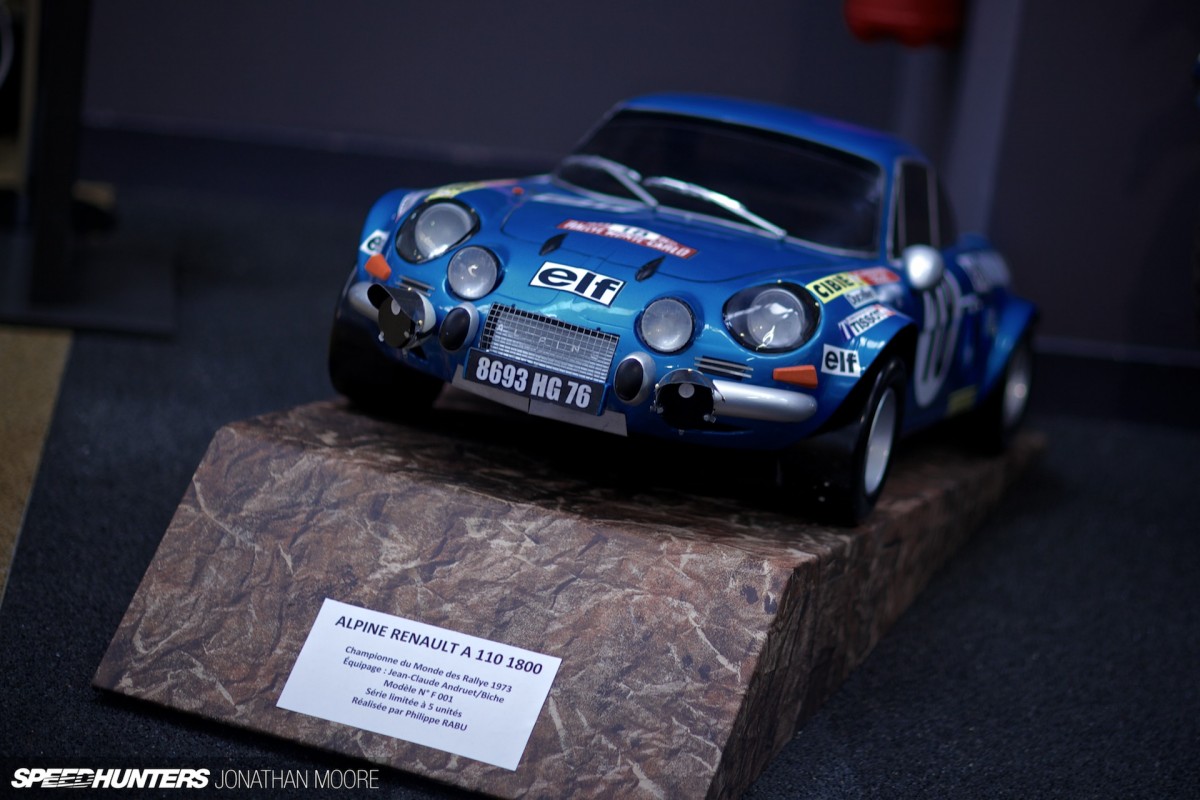
Small, lightweight sports cars with exclusively rear-engine configurations, Alpines not only looked great, but made the transition from the svelte ’60s to wedge ’70s in superbly impressive form through their two most recognisable cars: the squat and purposeful A110 and razor sharp A310. The former took the rally world by storm, winning a pair of international titles, its lithe shape making the boxy opposition look tame by comparison. That is, until the equally ground-breaking Stratos took things to another level…
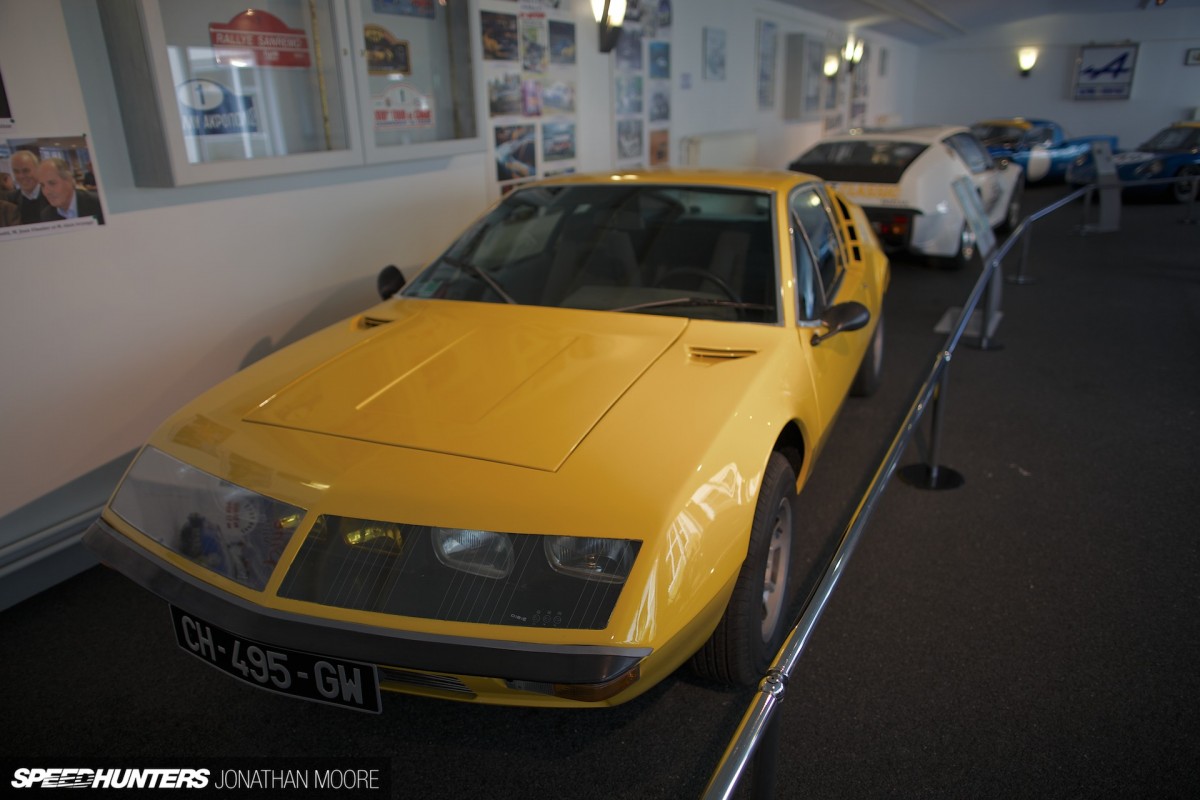
But much as I love the lowslung curves of the earlier Alpine, it’s the more modern A310 that I regard with particularly envious eyes. It’s the potential: you’d want to keep an A110 pretty much period in look, but to me the A310 looks like you could go mad with a wide bodykit, BBS rims and a bit of boost out back – and end up with an incredible machine.
But having been off the radar for over a decade, Alpine are now often overlooked, their illustrious past forgotten. Renault bought them out in the early 1970s, and as the 1990s rolled around, the marque had floundered. The last Alpine road cars rolled out of the Dieppe factory in the early 1990s, and since then the name has been relegated to being occasionally stuck on Renault’s performance models. Alpine deserve more. Earth needs Alpines.
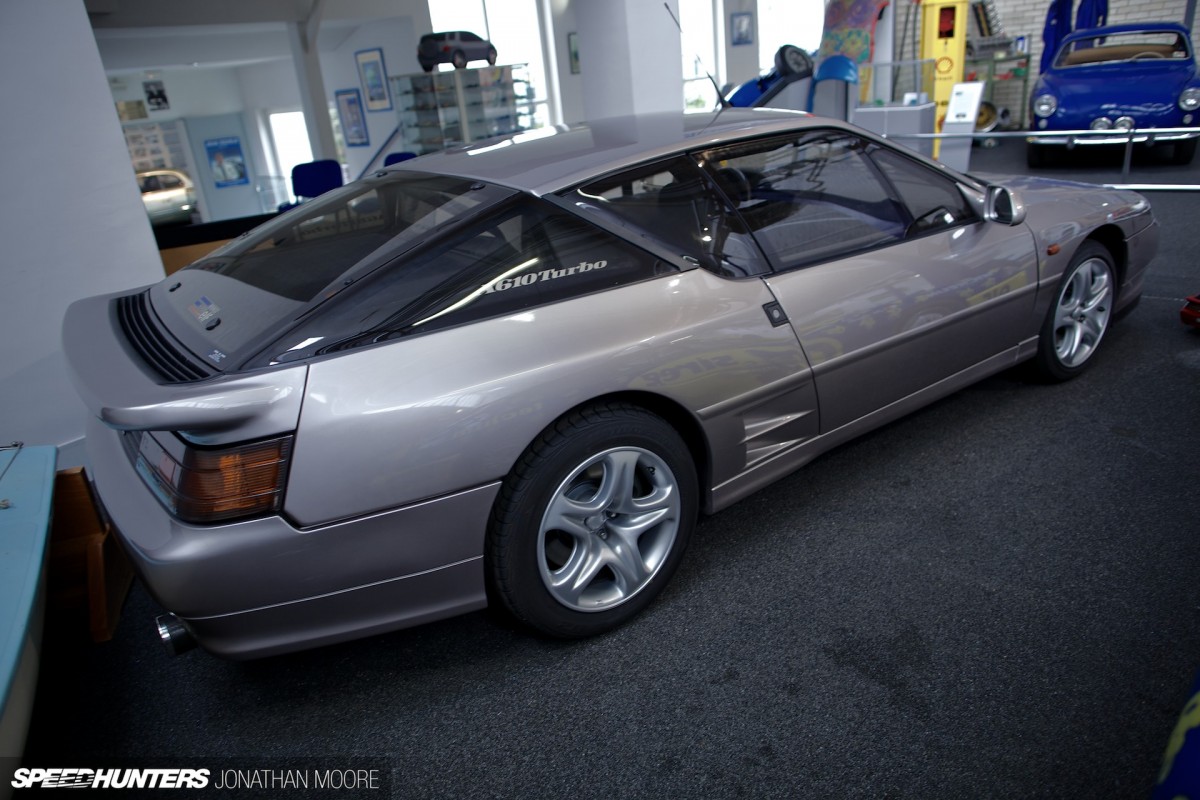
Secondhand prices of the two classics are high, but the more modern cars – which are also turbocharged – are much more reasonable. How about an A610 Turbo as a project car – the French equivalent of the Nissan 300ZX?
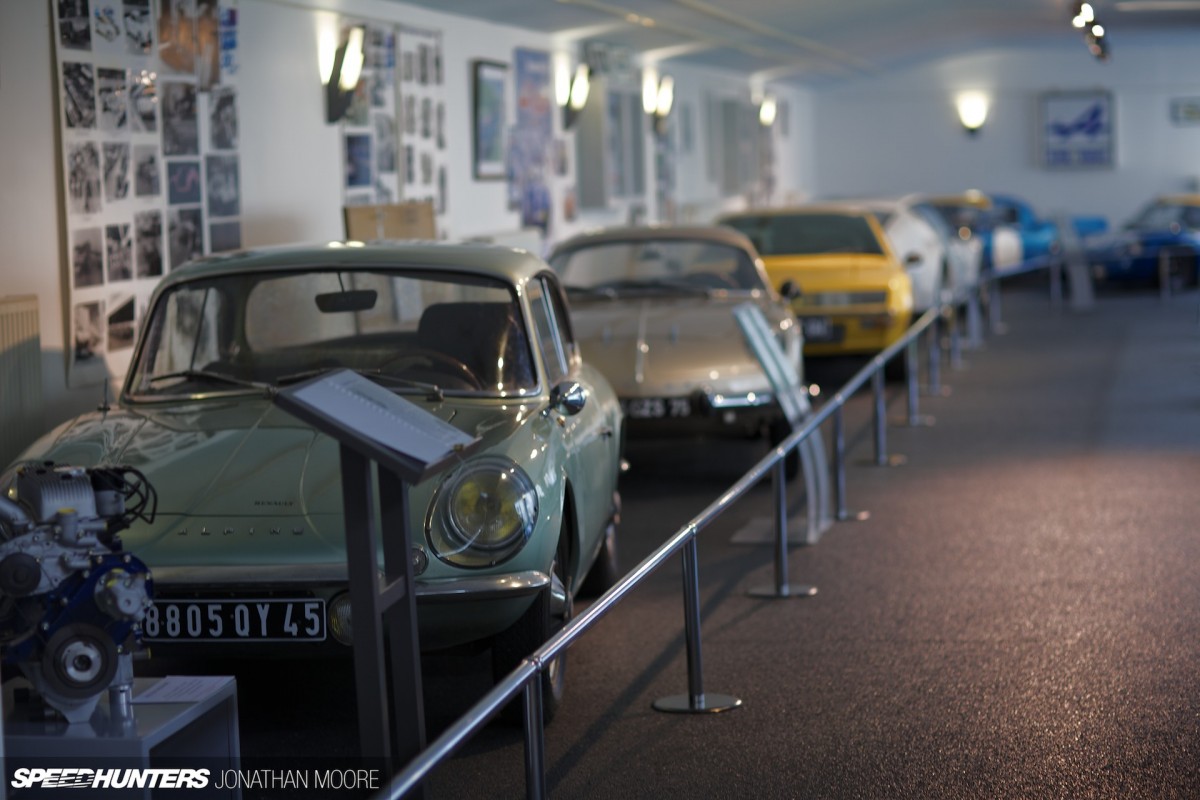
Why should we care about Alpine? Well, too often adjectives like quirky or eccentric are used in regard to low-volume, specialist European sports car manufacturers of the ’60s and ’70s. This is typically applied to the French ones – and it’s usually with negative connotations.
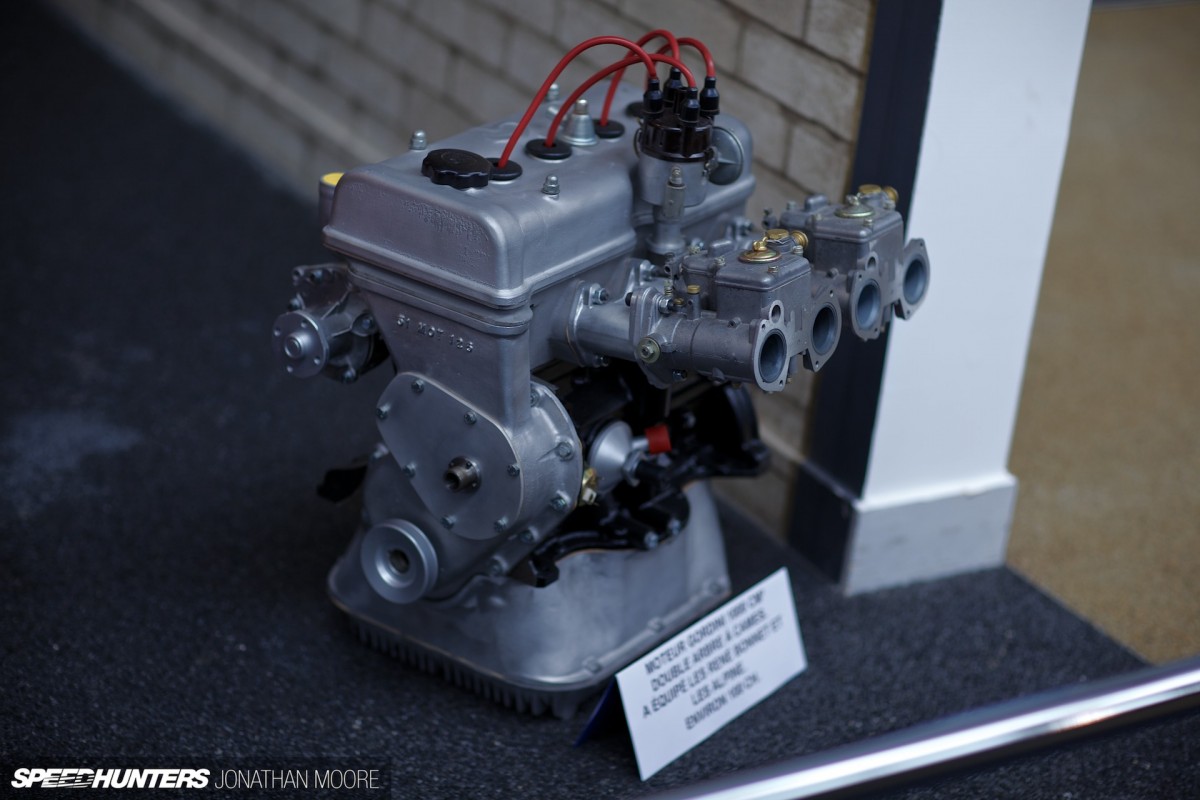
But Alpine is a company where the terms need to be chosen carefully. I’d go for unconventional rather than quirky. Groundbreaking instead of eccentric. They might have used low-power, tiny little straight-four motors to start with – but what they did with them was something else. They pioneered fibreglass bodywork, stuck with rear-wheel drive from the start and took on the established manufacturers in rallying and racing at the highest levels – and won.
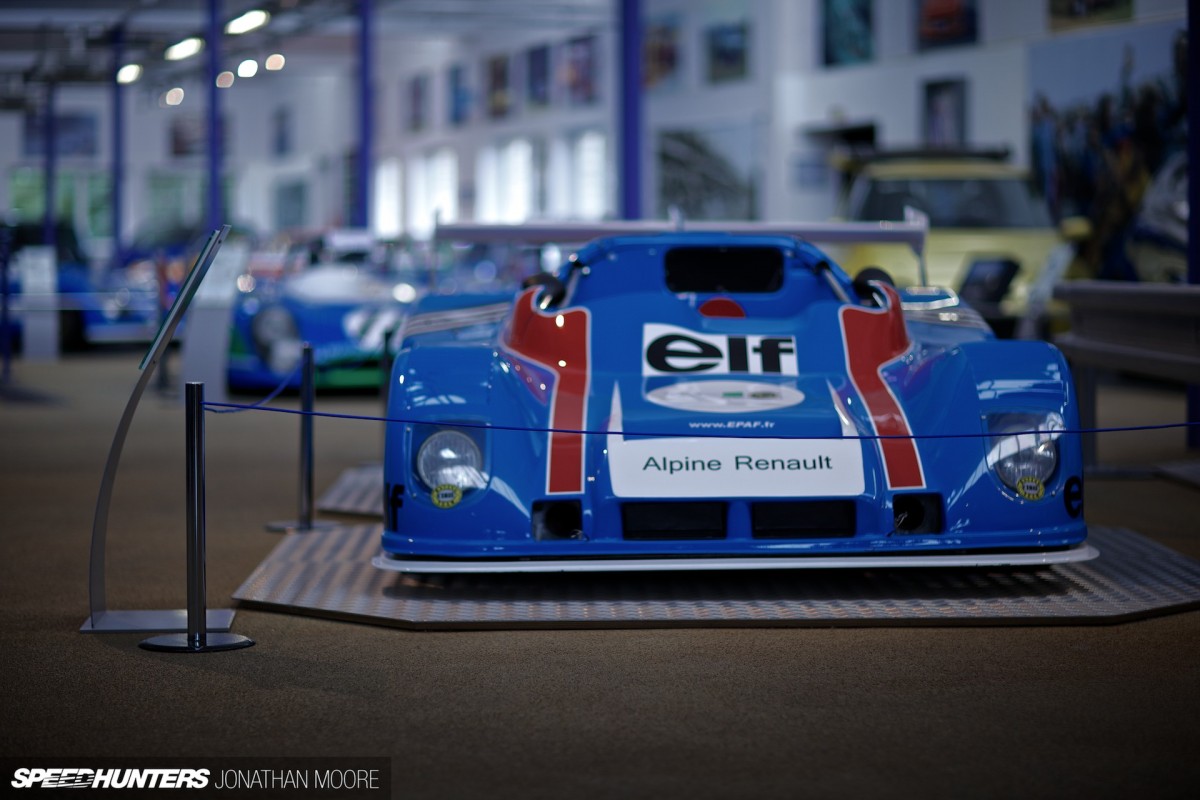
That racing success wasn’t a surprise, seeing as that’s really what Alpine was started for. Société Anonyme des Automobiles Alpine was the brainchild of Jean Rédélé, the son of a Renault test engineer who became a Renault dealer himself just after the end of the Second World War.
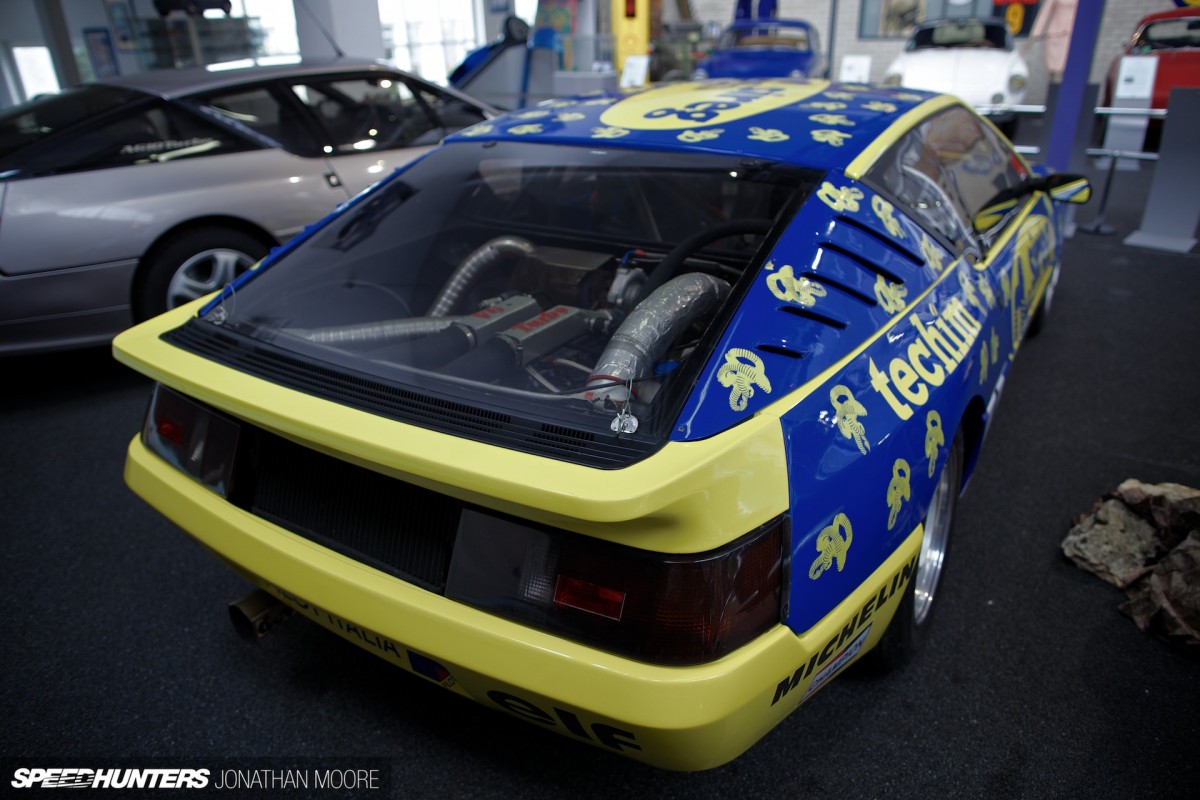
Those close ties with Renault would define the Alpine brand: independent tuning but staying inside the manufacturer fold. Think along the same lines as AMG to Mercedes-Benz or Abarth to Fiat.
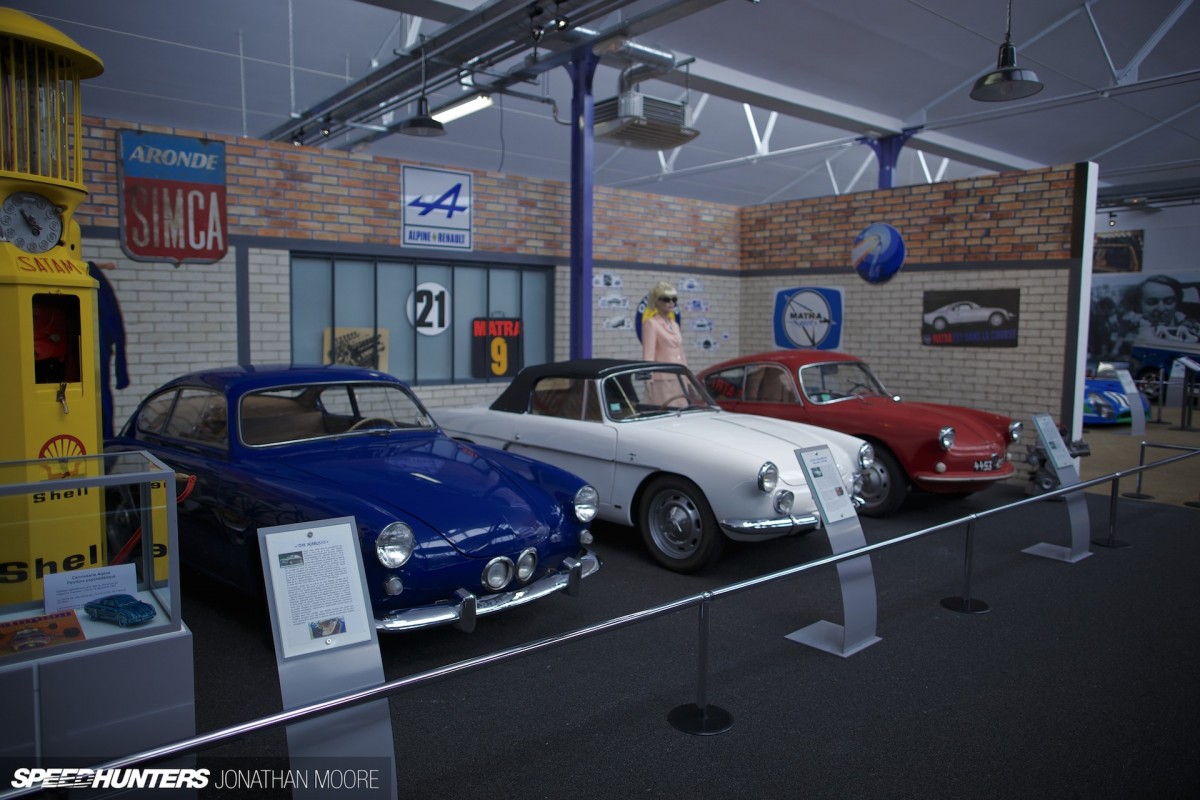
Rédélé was a passionate racer. Taking what was pretty much the only car being produced in a country still shattered by the experience of war, Rédélé ran tuned Renault 4CVs to numerous successes in some serious competitions – and he headed straight for the big ones, including the fearsome Mille Miglia, Le Mans, Sebring and the Coupe des Alpes.
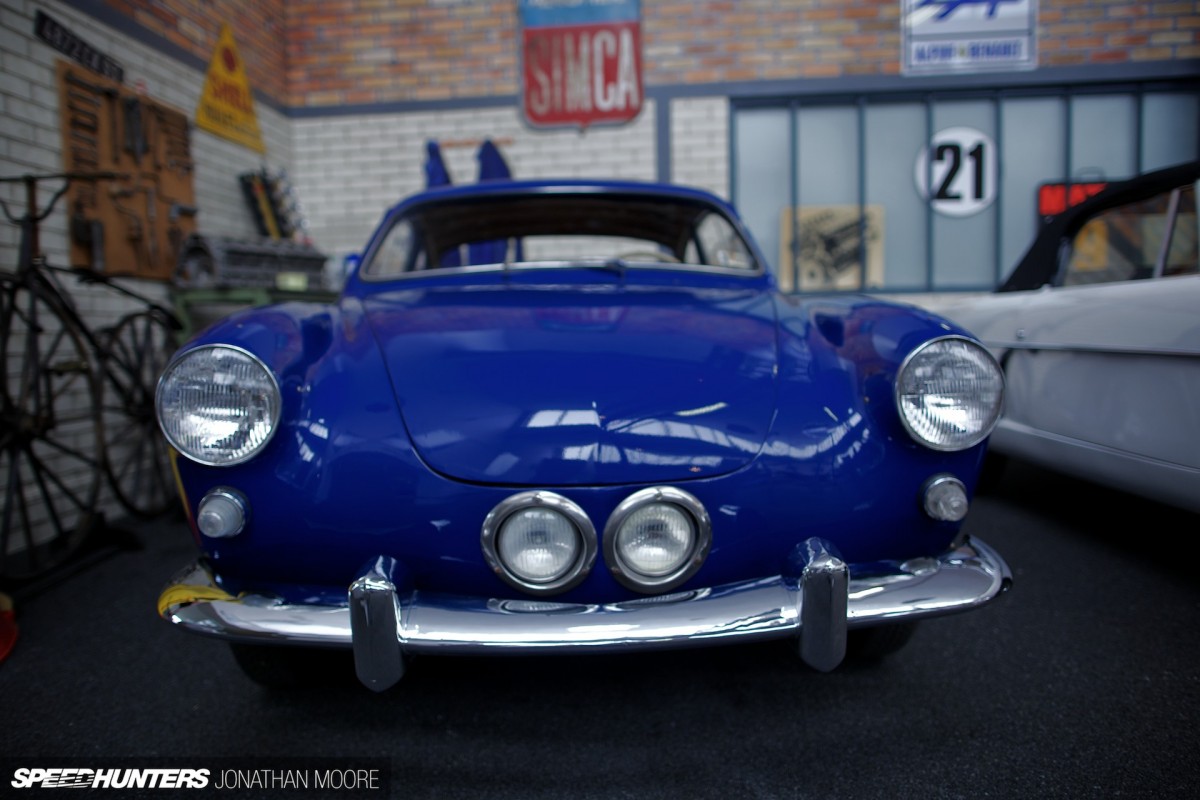
The latter event inspired the name of his new venture, formed following the abortive attempt to sell a 4CV-based, fibreglass-bodied coupé into the USA in 1952 – that was the Marquis, shown here. Roping in Italian coachbuilders Michellotti to design and Allemano to construct his new car, three prototypes were built between 1952 and 1954. It was quite a departure from the econo-box original: actively pretty, I’d say.
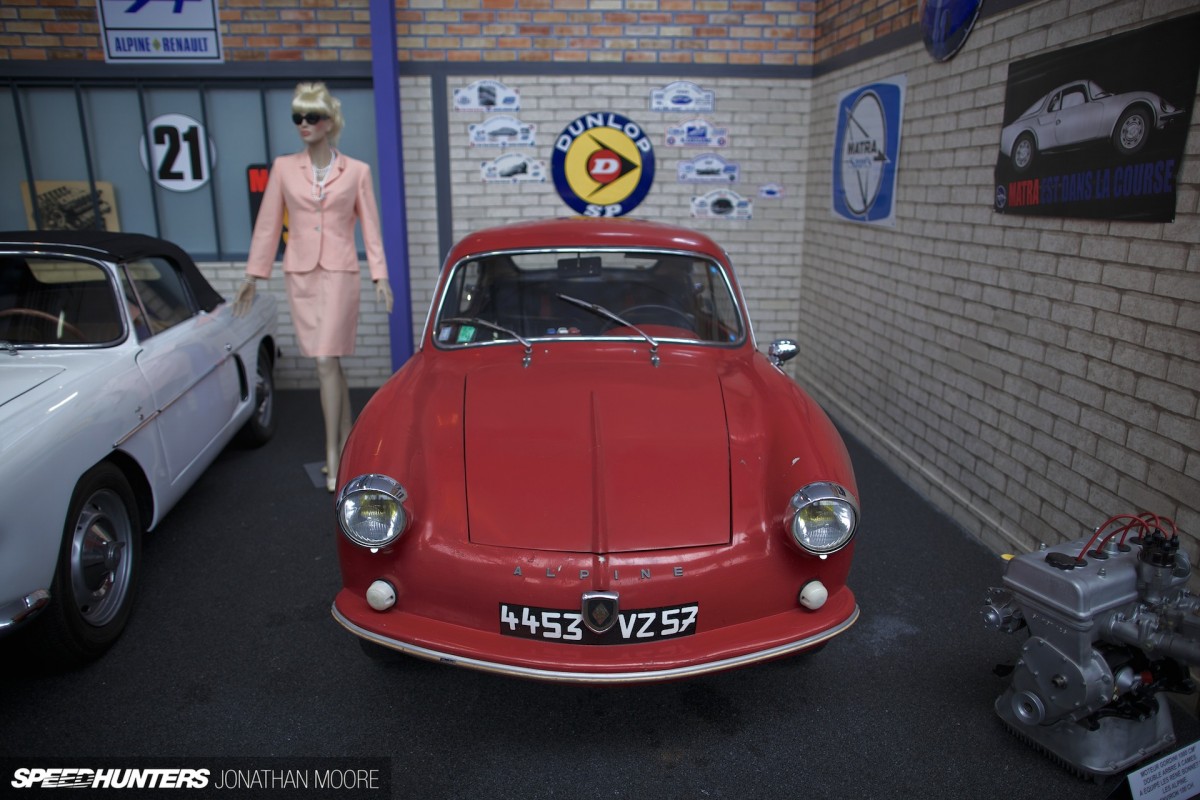
The first Alpine proper was this little beauty, the A106 Coach, which was the positive result of the failed Marquis project. It used innovative lightweight fibreglass technology and featured a stiffened chassis with a tubular backbone.
Racing in the DNA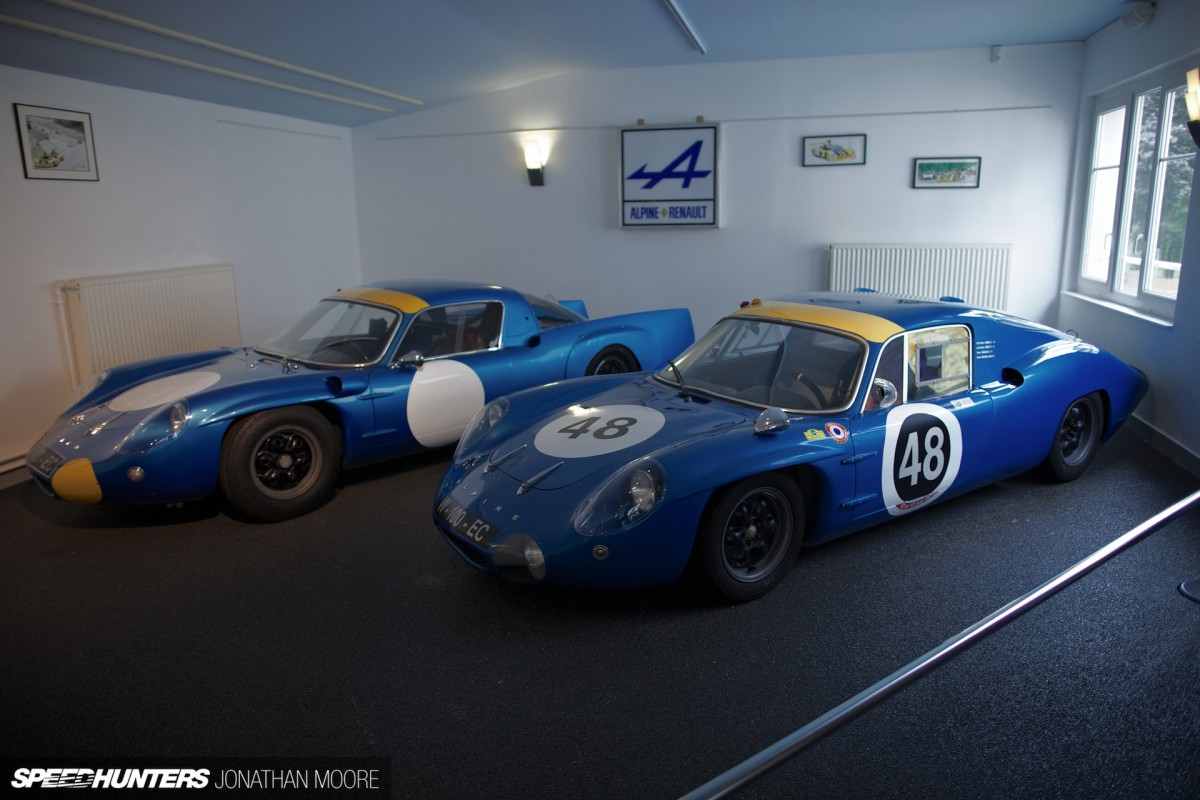
Being French, Le Mans figured strongly from the start of the Alpine story: these pair of lithe prototype coupés are the class-winning M64 streamliner from 1964 (right) and A210 which raced between 1966-69.
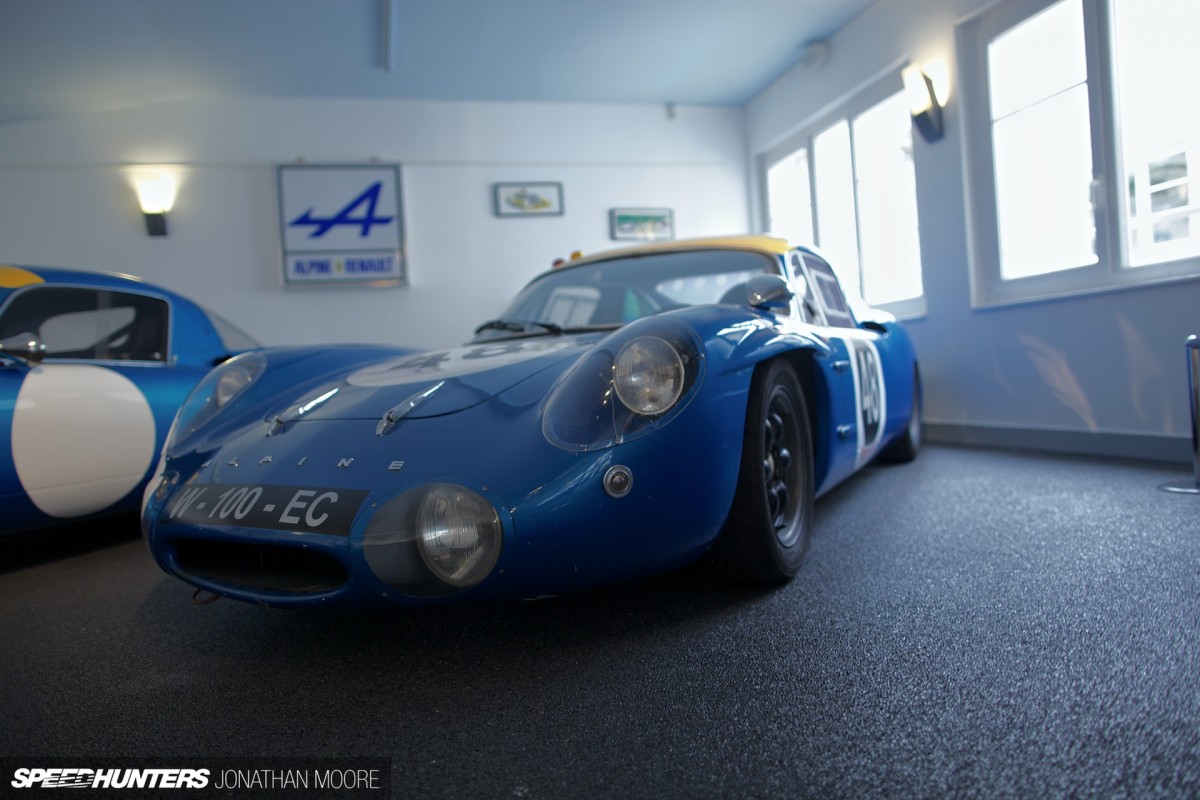
The M64 was an archetypal Alpine: 640kg, just a metre tall with a one-litre engine, yet a top speed of 240kph. Both these cars (along with their predecessor, the M63, and successor, the A220) found success at the world’s legendary tracks: the Nürburgring, Le Mans, Sebring, Montlhéry, Clermont Ferrand, Reims and more.
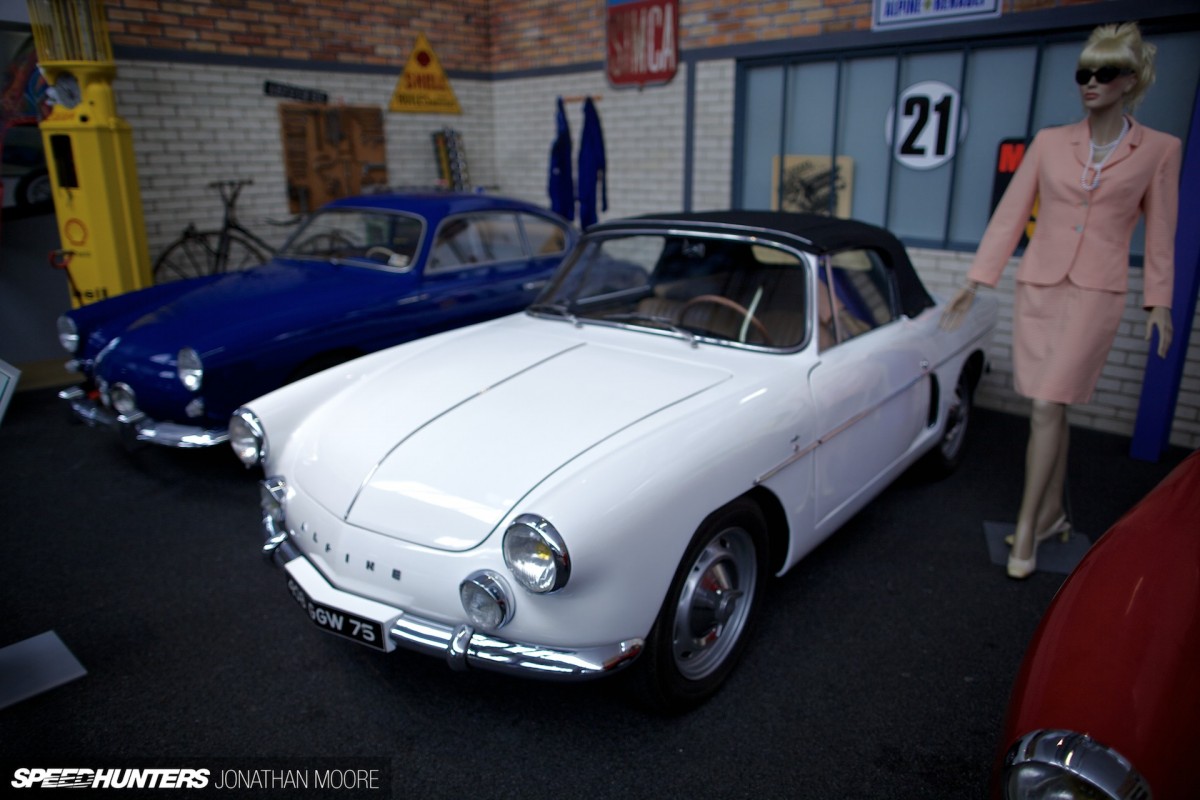
The A108 road car replaced the A106 in 1958, though the two were produced in parallel to start off.
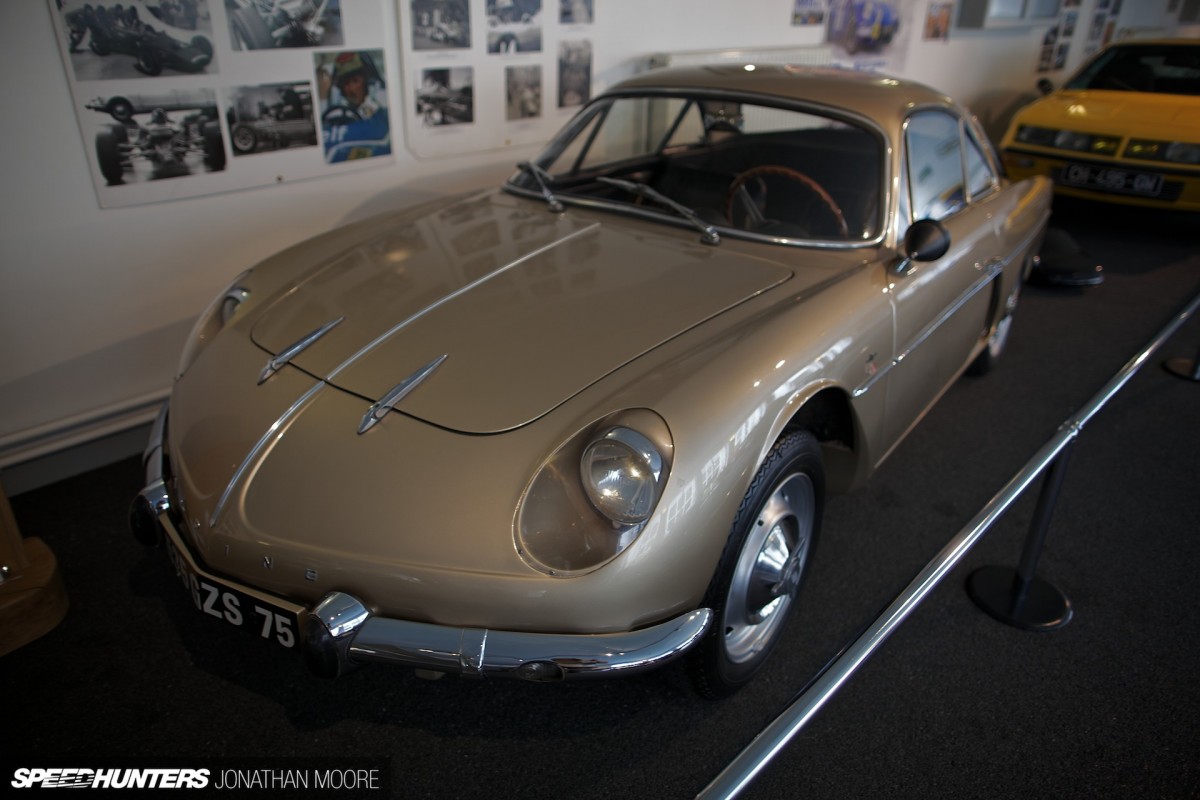
This is the second generation Berlinette Tour De France version, which introduced the nose styling that will be familiar to all fans of Alpine’s legendary pocket rocket, the A110.
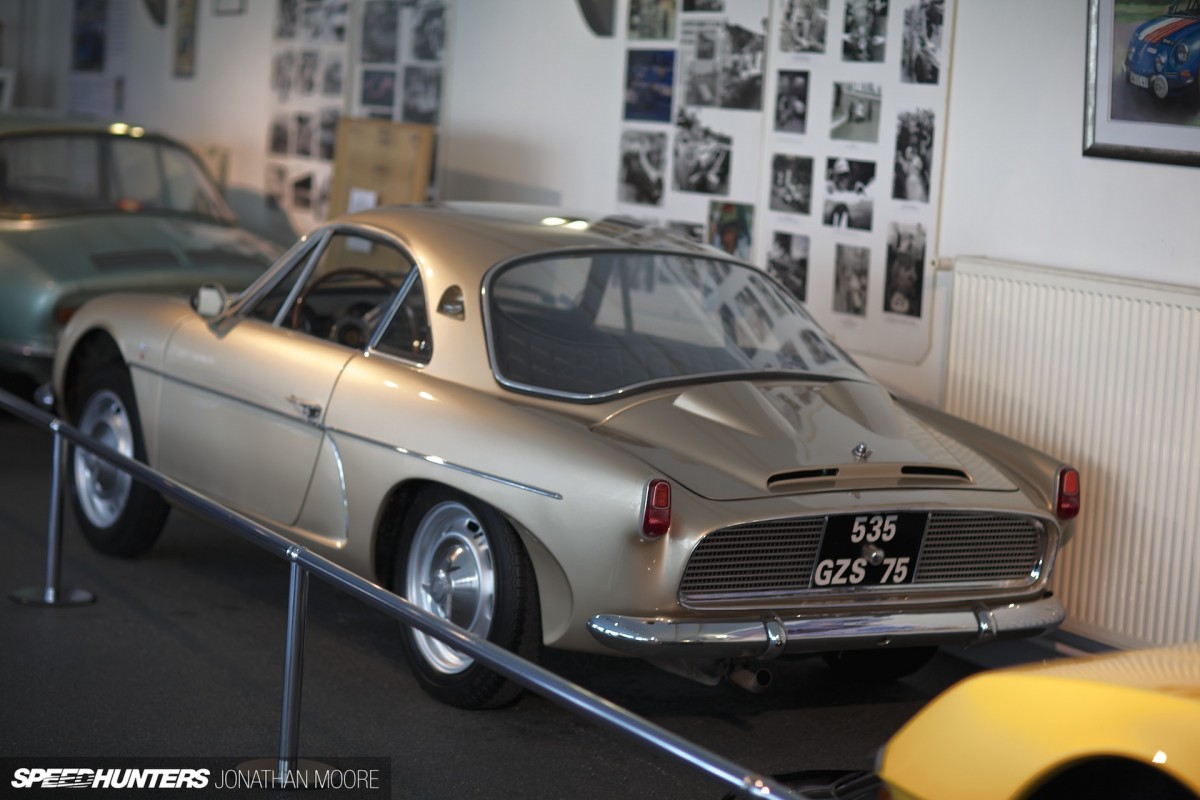
But it’s out back where I think the Berlinette ticks even more boxes: there’s so much detail around the tail. Equally more sophisticated in form and more racy in function, this extremely rare car is just gorgeous. Like all the best cars, the A108 Berlinette was thrown straight into competition on its launch and proved that buying an Alpine road car was never a compromise.
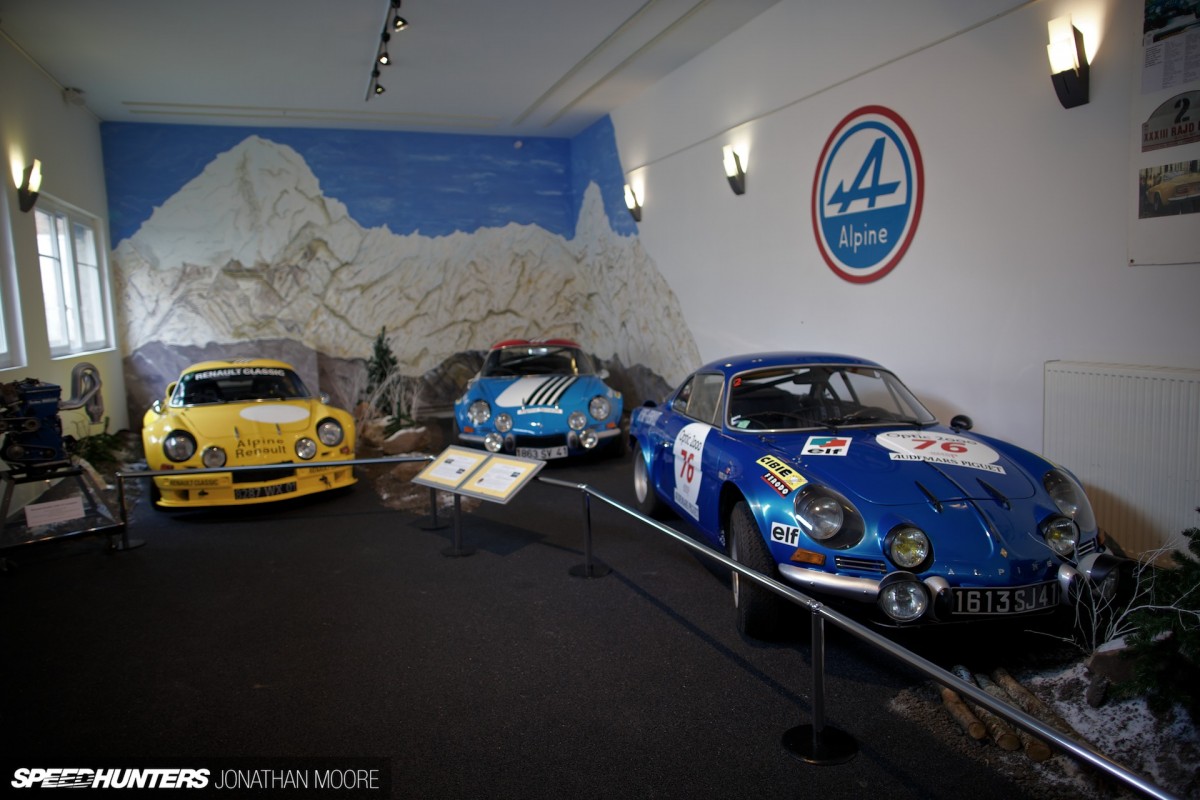
Production of the iconic A110 began in 1961 and continued for a spectacular 16 years. I think this diminutive car is still as jaw-droopingly beautiful now as it was then – but then, it was designed by Giovanni Michelotti. In road racing form it was as slammed as any society would demand; in rally form it tore up the world’s stages, dazzling spectators with its tail-out style as much as the six-up lighting pack, and the A110 made Alpine the inaugural WRC champions. With such a long run, it’s not surprising that there were plenty of variants produced, getting more and more extreme over the years.
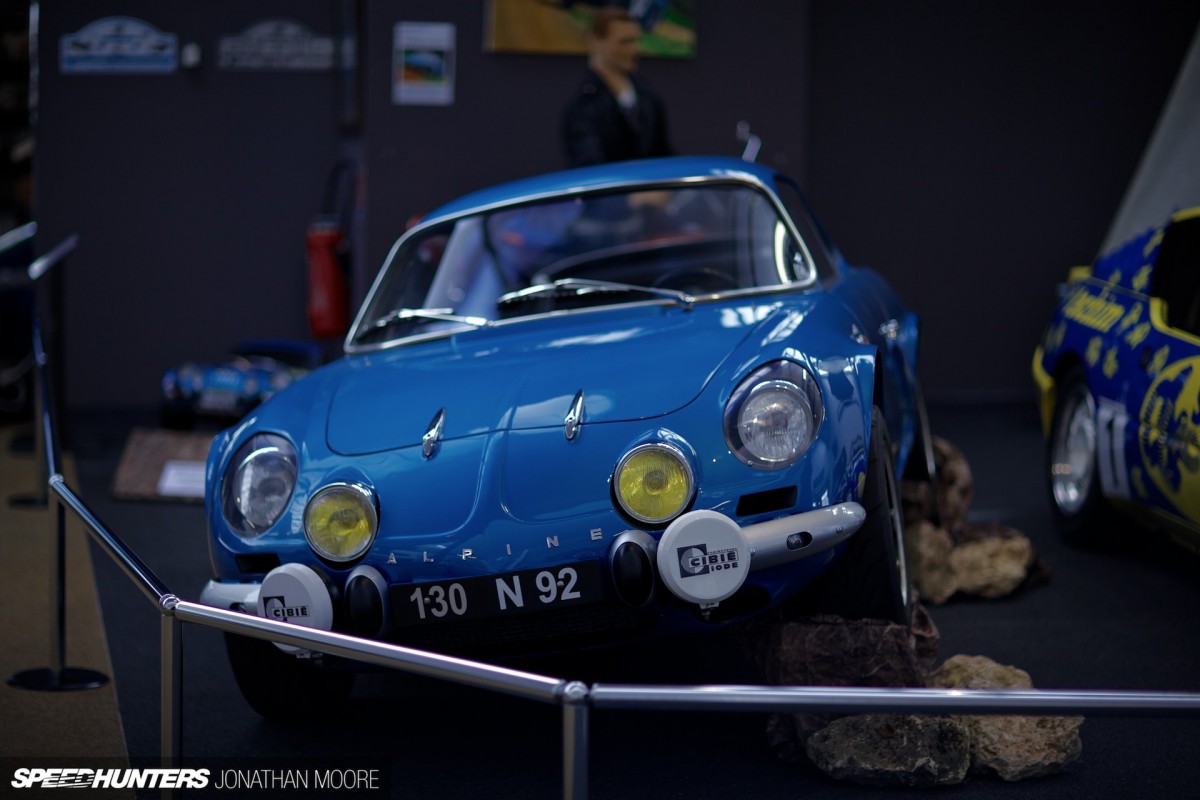
This is a Berlinette A110 Écrou Central (‘central nut’) from 1967, another rare model, designed by André de Cortanze – who would go on to design various Formula 1 cars and was Technical Director of Toyota’s F1 effort in the 2000s. It used centre-locking magnesium wheels developed on the A210 Le Mans prototype, Girling endurance brakes, an integrated roll cage, upgraded steering rack and dual fuel tanks.
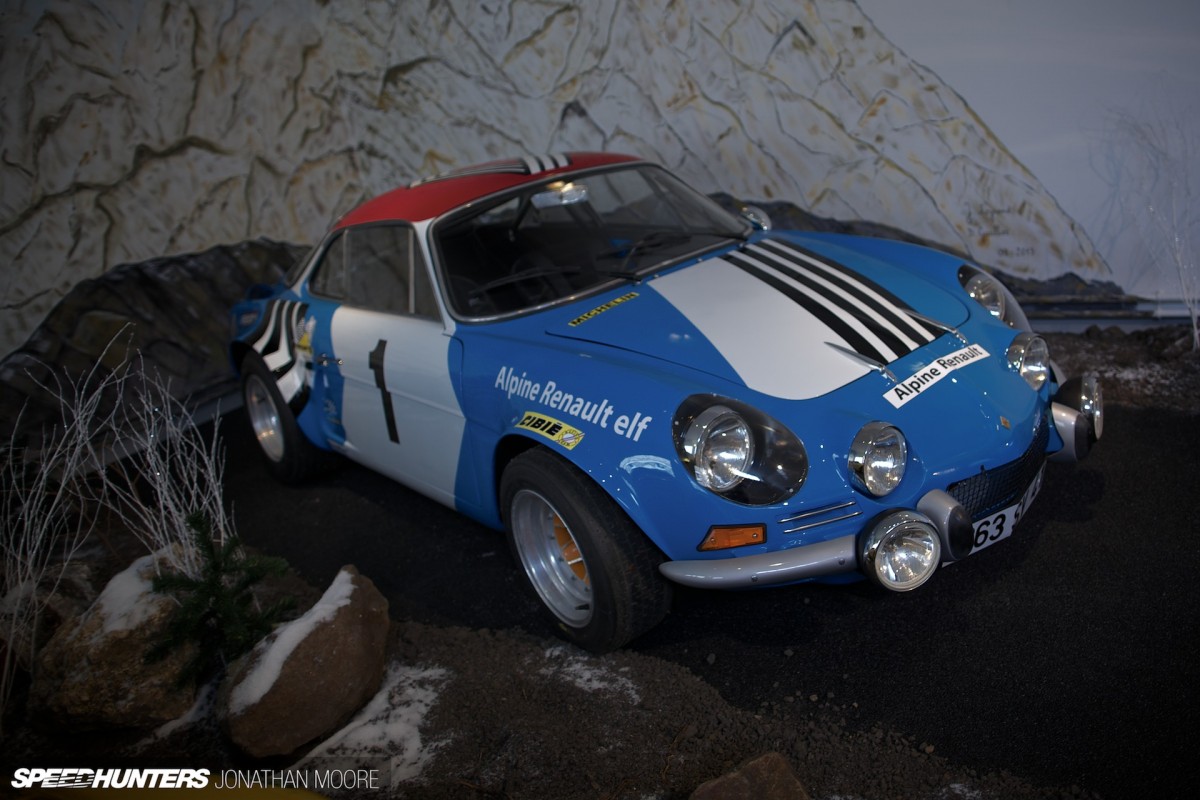
Like many European specialist sports cars, Alpines wouldn’t bother those who only look at numbers. But as with a Lotus, it’s what you do with small numbers that matter: take out the kilograms and the horsepower available is multiplied exponentially in performance terms. Alpine’s Group 4 A110 tarmac terror was a case in point. It might have only made 165hp from its little Renault-Gordini straight four, but it weighed a featherlight 720kg and had a top speed of 215kph. When you’re basically sitting on the floor. Who wouldn’t want to experience that?!
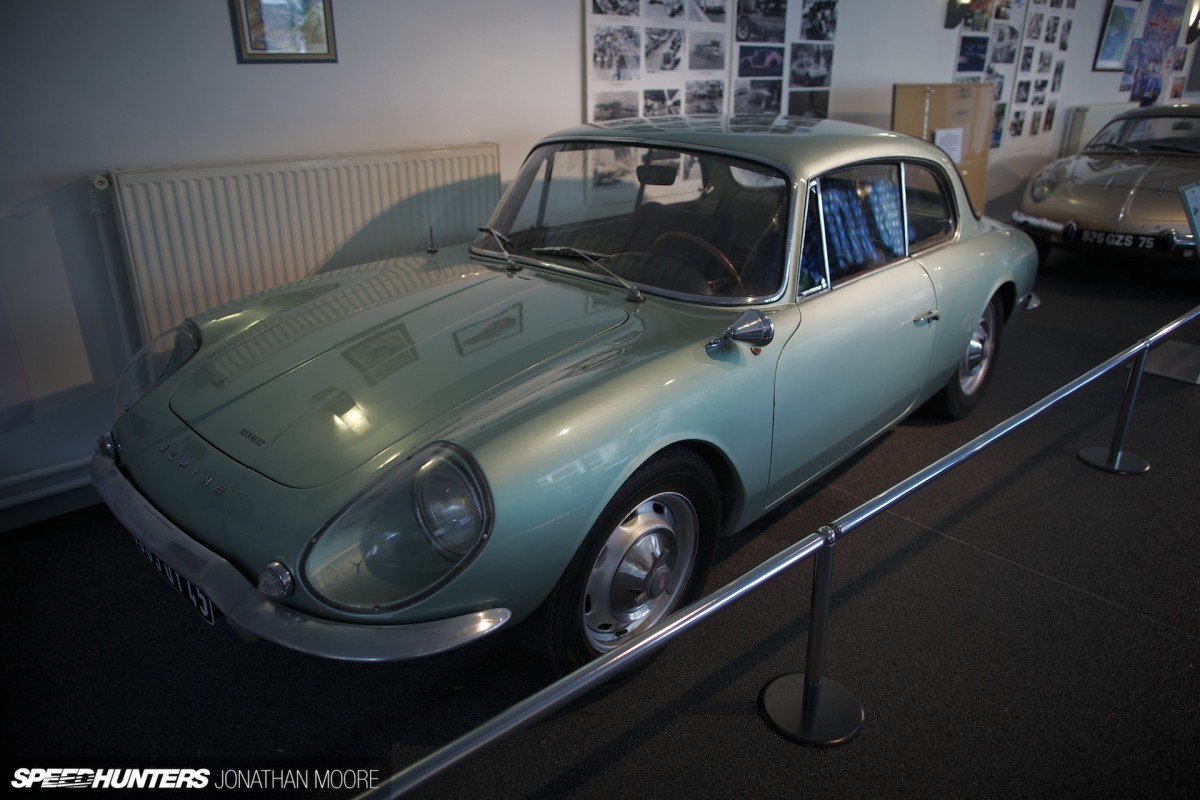
Before visiting the exhibition, I’d never seen the longer wheelbase GT4 version of the A110: this was effectively an A108 GT4 2+2 updated with A110 engine and running gear, which is perhaps why the design looks a little dated compared to the regular Berlinette.
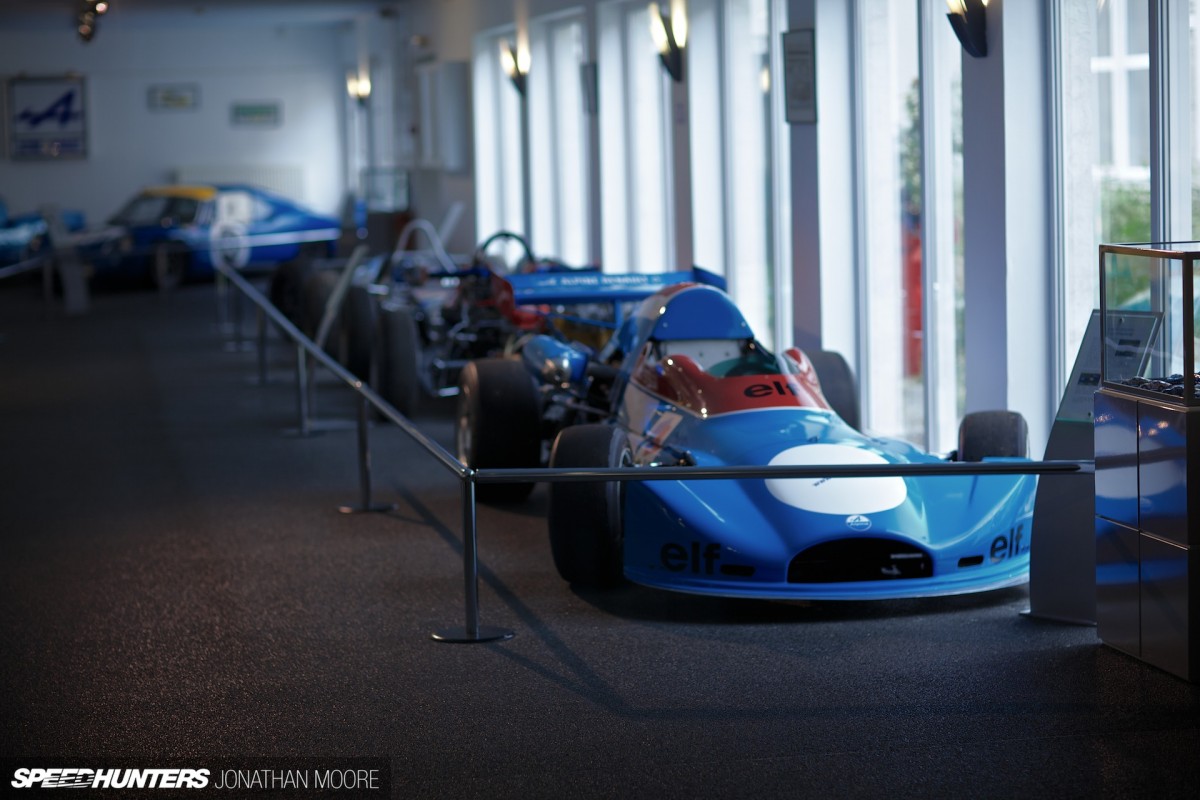
Another thing I wasn’t aware of was Alpine’s forays into single seaters. Three Formula cars were on show – de Cortanze also had a hand in these racers. Although Alpine didn’t scale the heights of Formula 1 like their contemporaries Matra, they did well in F2, F3 and the domestic Formula France series.
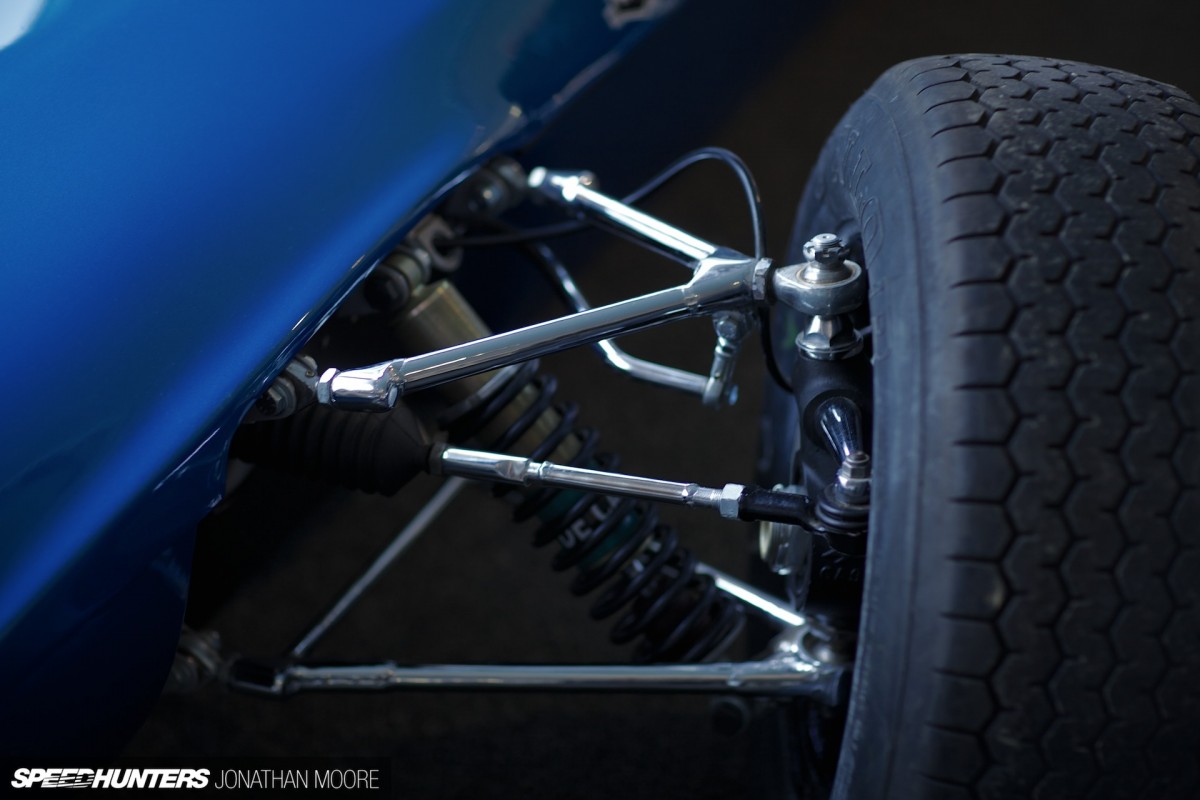
There’s always something about old racing cars in general, but with single seaters, so much more is on show. The skeletal suspension arms look awfully thin…
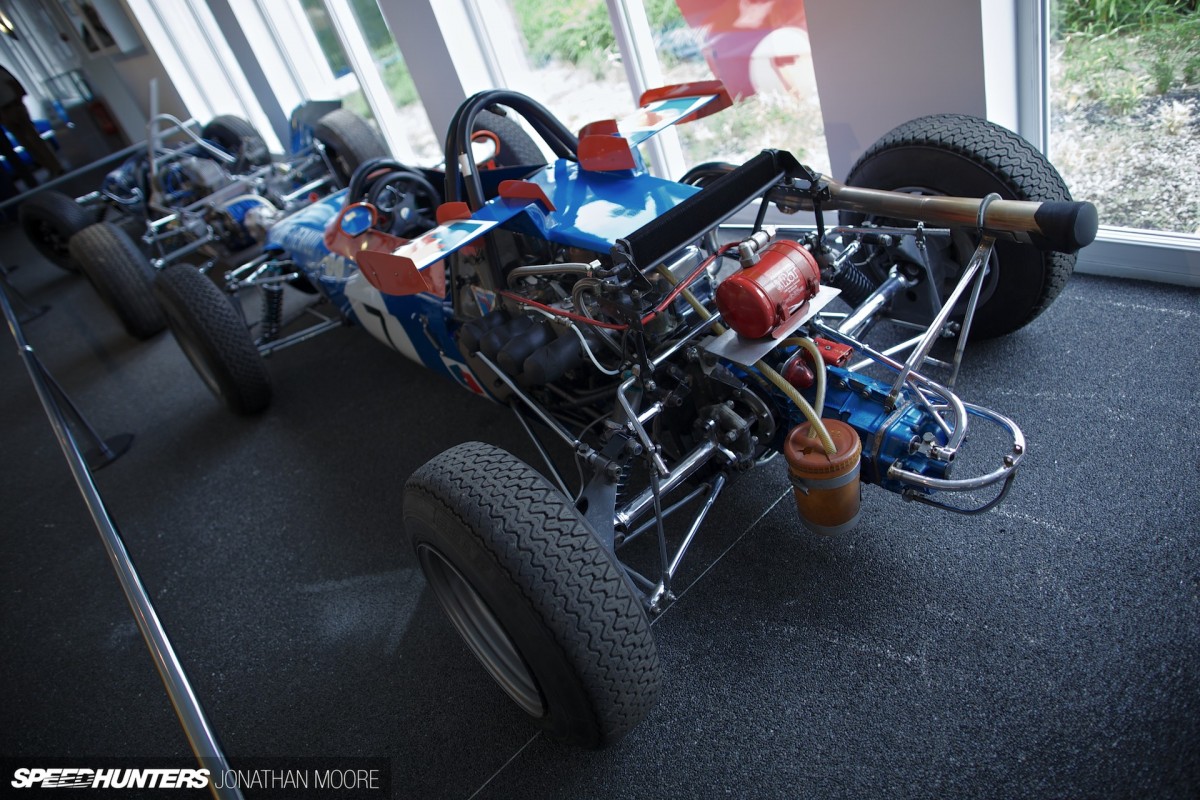
How can you not like a car nicknamed Le Dinosaure? This car competed in F3 in 1972-3, weighing just 440kg with 125hp on tap. Here it was open at the rear and mounted small winglets just behind the roll hoop, but the car also raced with a jagged-looking nose and enclosed rear bodywork, which is perhaps where the name came from…
The dawn of turbos, the sunset of Alpine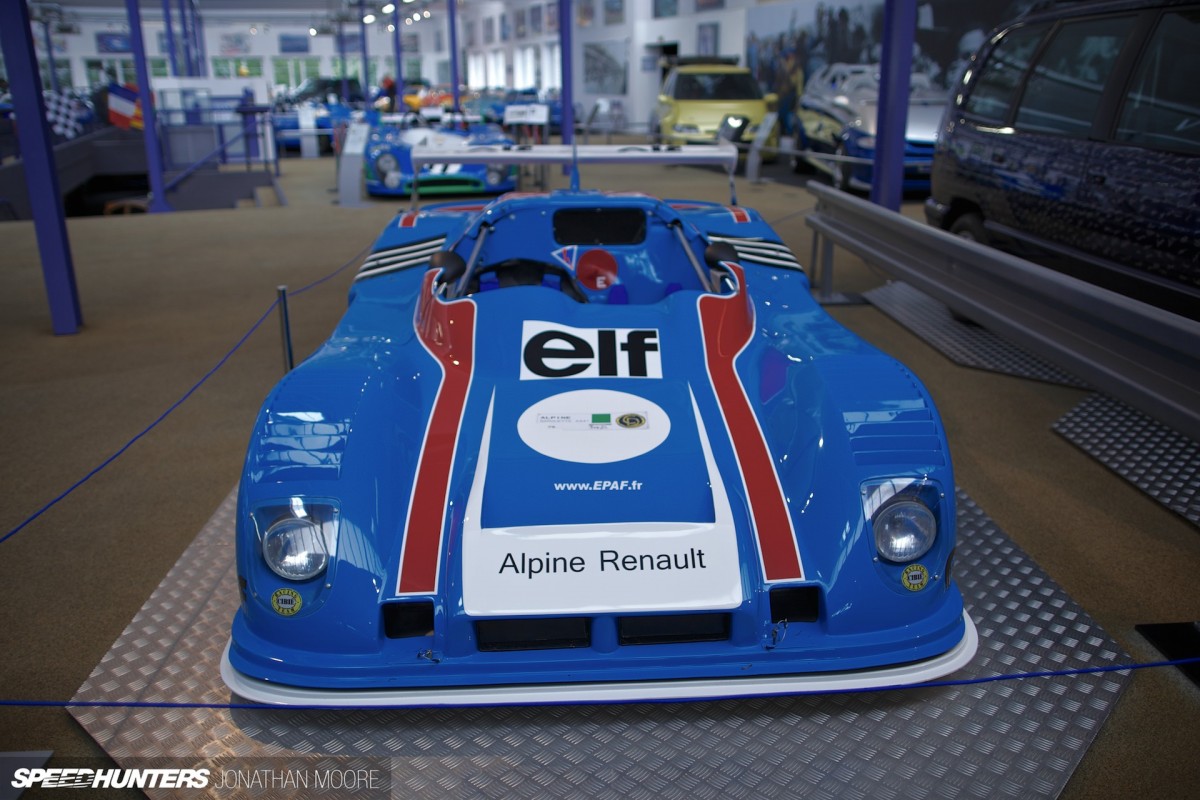
Alpine’s Le Mans story really took off in the early 1970s with the injection of Renault cash. After a short hiatus following the Renault takeover, Alpine really wanted to be back at the great race – and aiming for the top step.
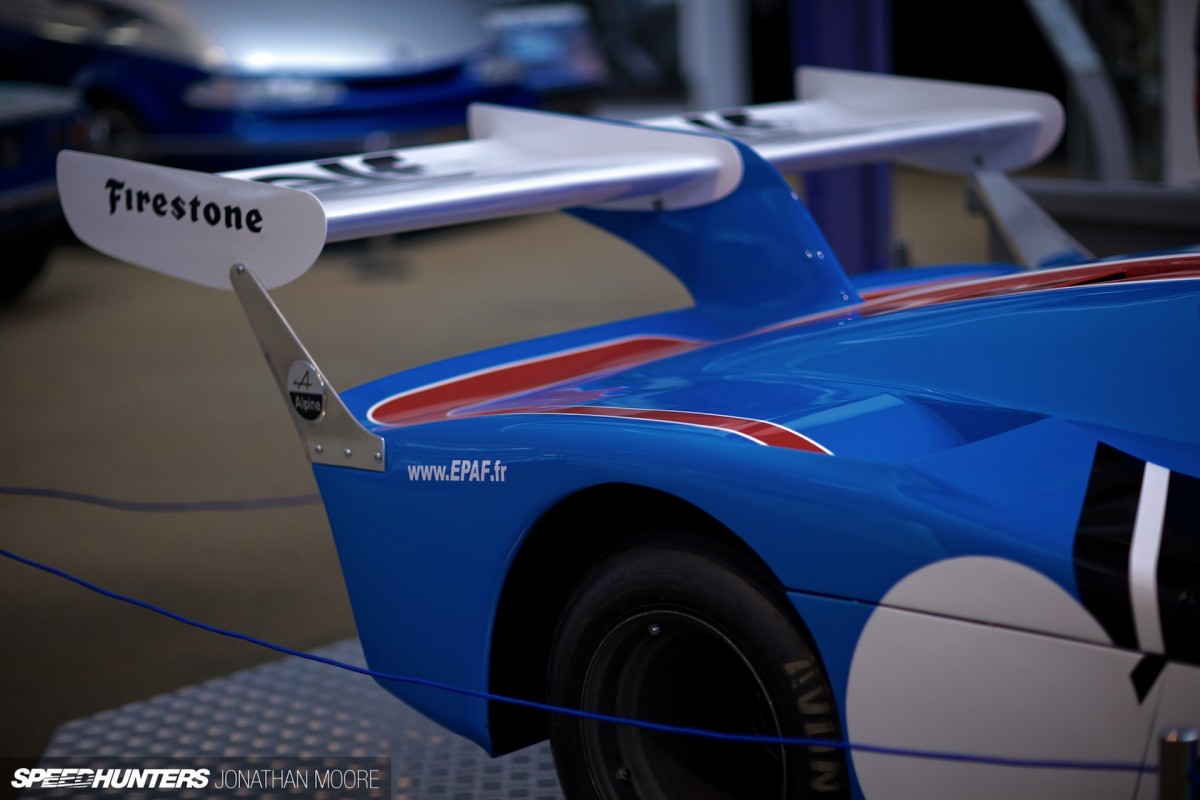
They started the ball rolling in 1973, but things got serious the following year with the A441. This low-line prototype swept the 1974 European 2-Litre championship, blitzing all seven races, which included a tilt around Clermont-Ferrand.
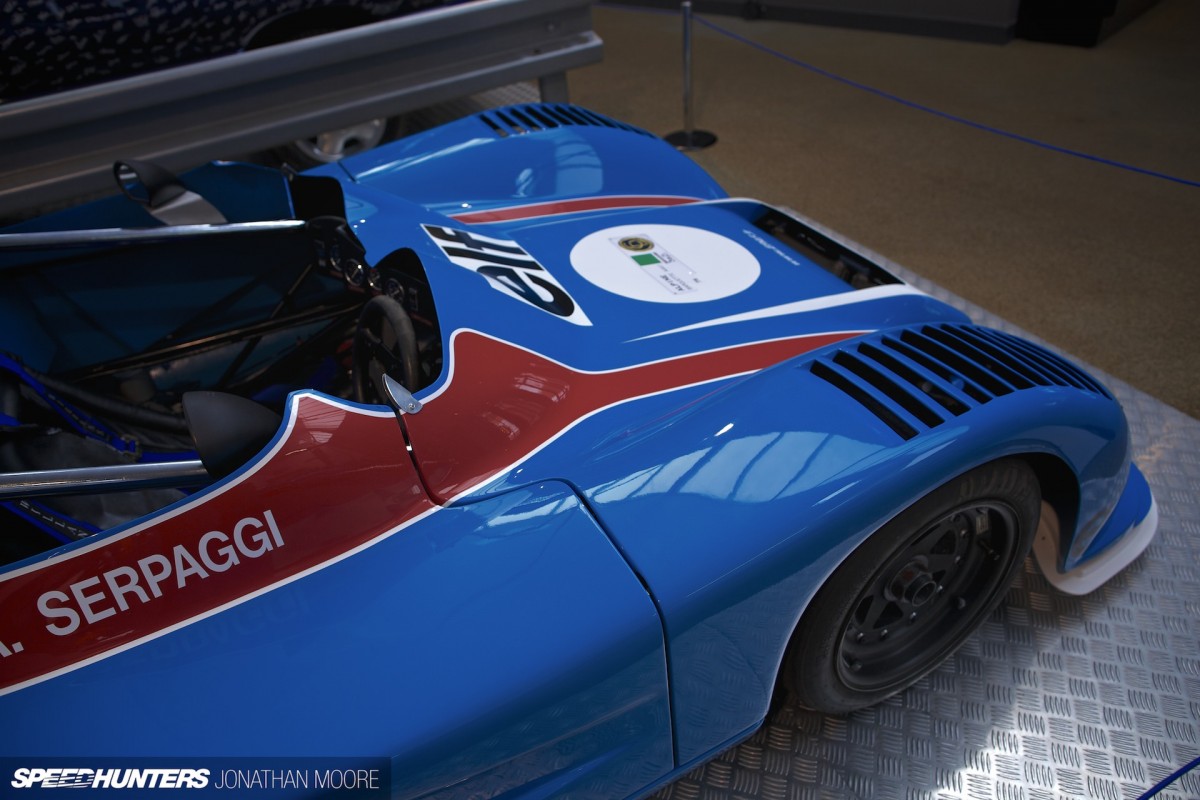
Having visited that track last year, it seems implausible to have a whole grid of these phenomenally quick machines screaming around the mountain circuit… This is the winning car from that glorious 1974 season, recently restored.
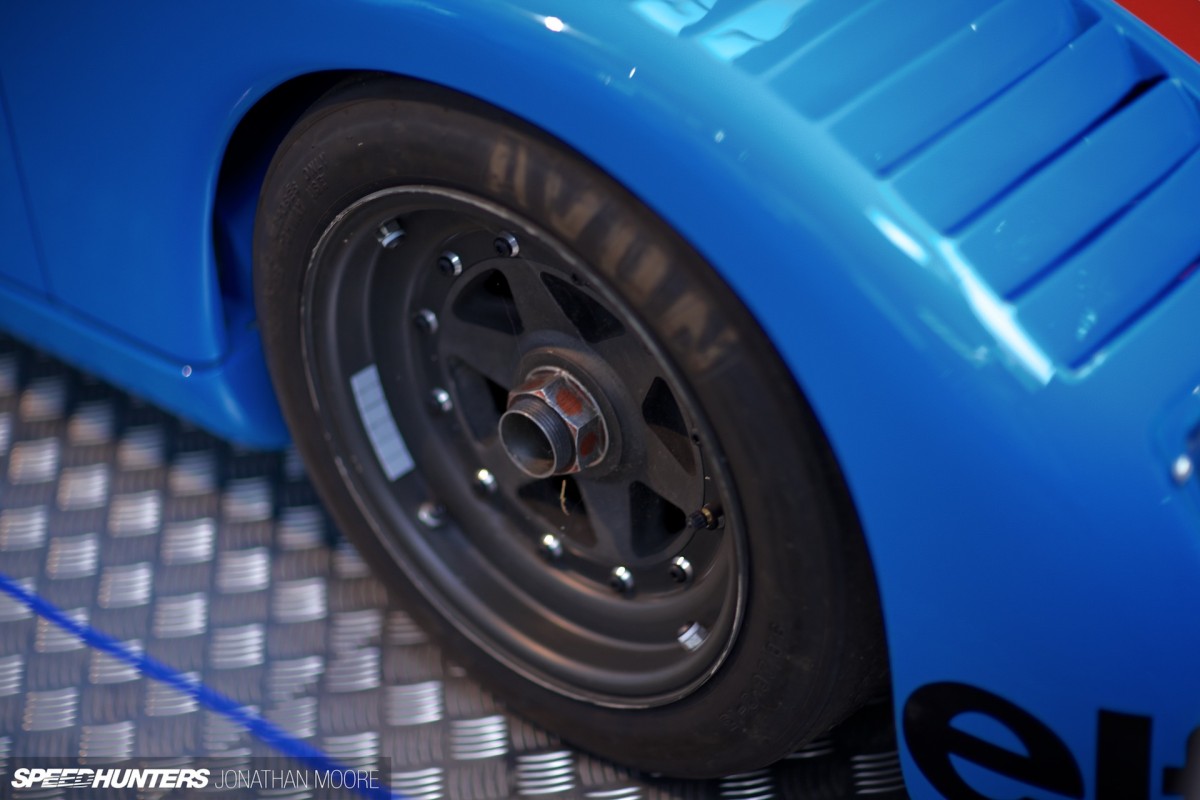
What’s also difficult to comprehend is, again, just how small these Le Mans Prototypes are. Stand next to a modern LMP1 and they might be low, but they’re mighty wide and long. These 1970s cars are absolutely tiny in comparison! The wheels look like they’re from a go-kart.
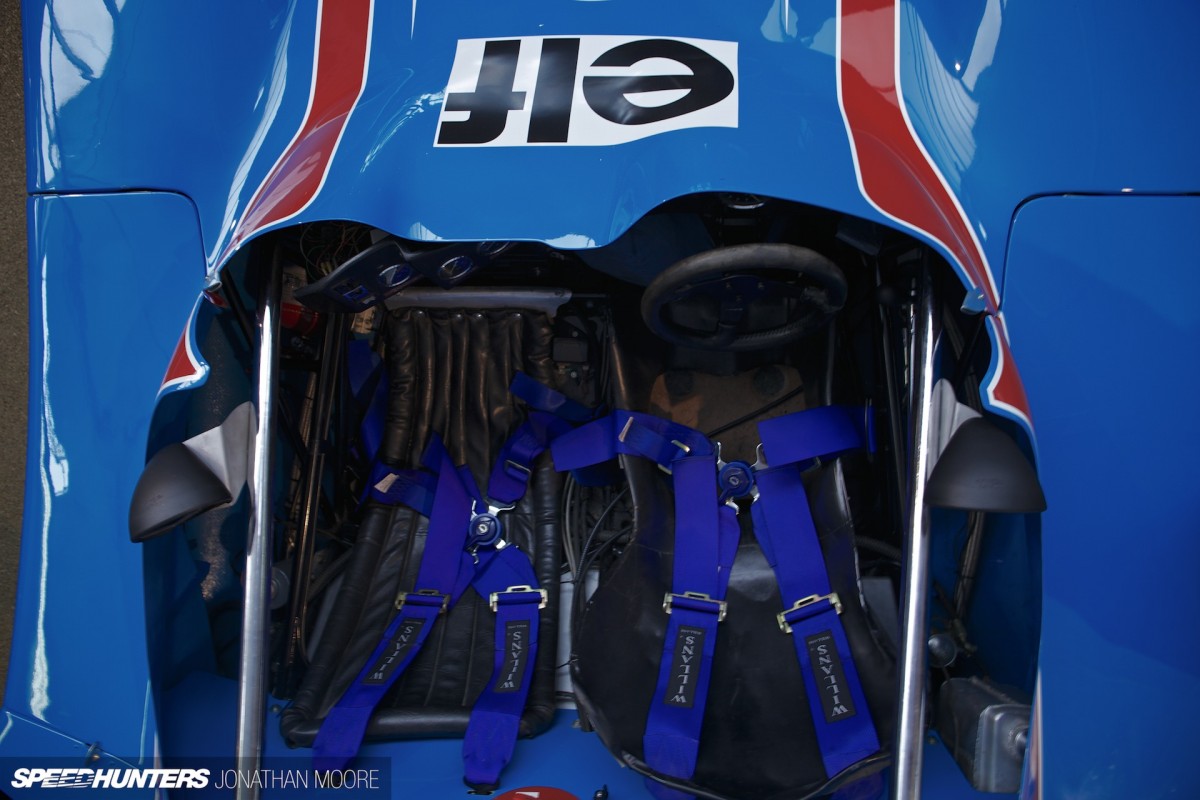
The A441 was as light as a postage stamp – just 580kg dry – but had some decent downforce. Being behind the wheel would be quite an experience. Being strapped into the jump seat? Terrifying.
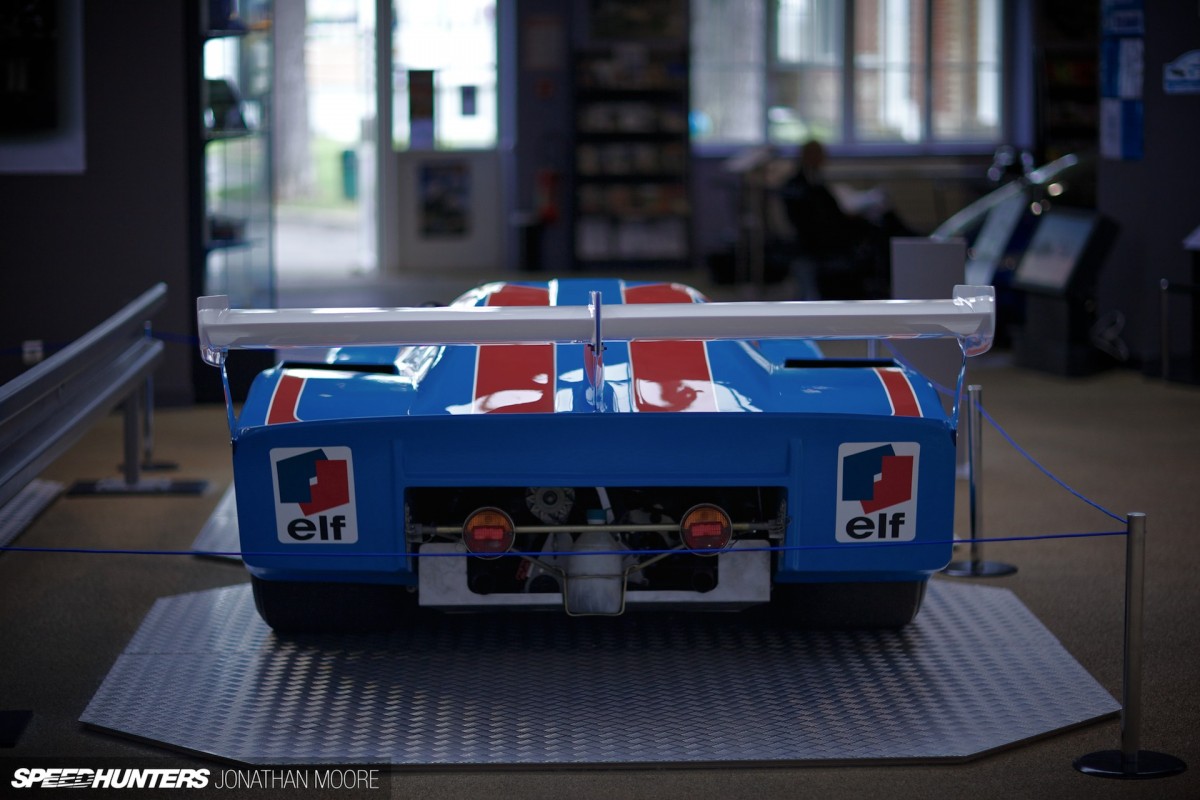
Even if you don’t really care for old sports prototypes of this era (in which case we really need to have words), then there’s one thing about these Alpines that you really need to respect. It begins with T. The word is turbo. This small blue prototype from 1974 laid the foundations for Alpine’s return to Le Mans in 1975 and the Renault-Alpine that would win the 24 Hours by 1978, but more importantly was used during the off season as the testbed for Renault’s V6 turbo programme that would revolutionise both sports car racing and Formula 1.
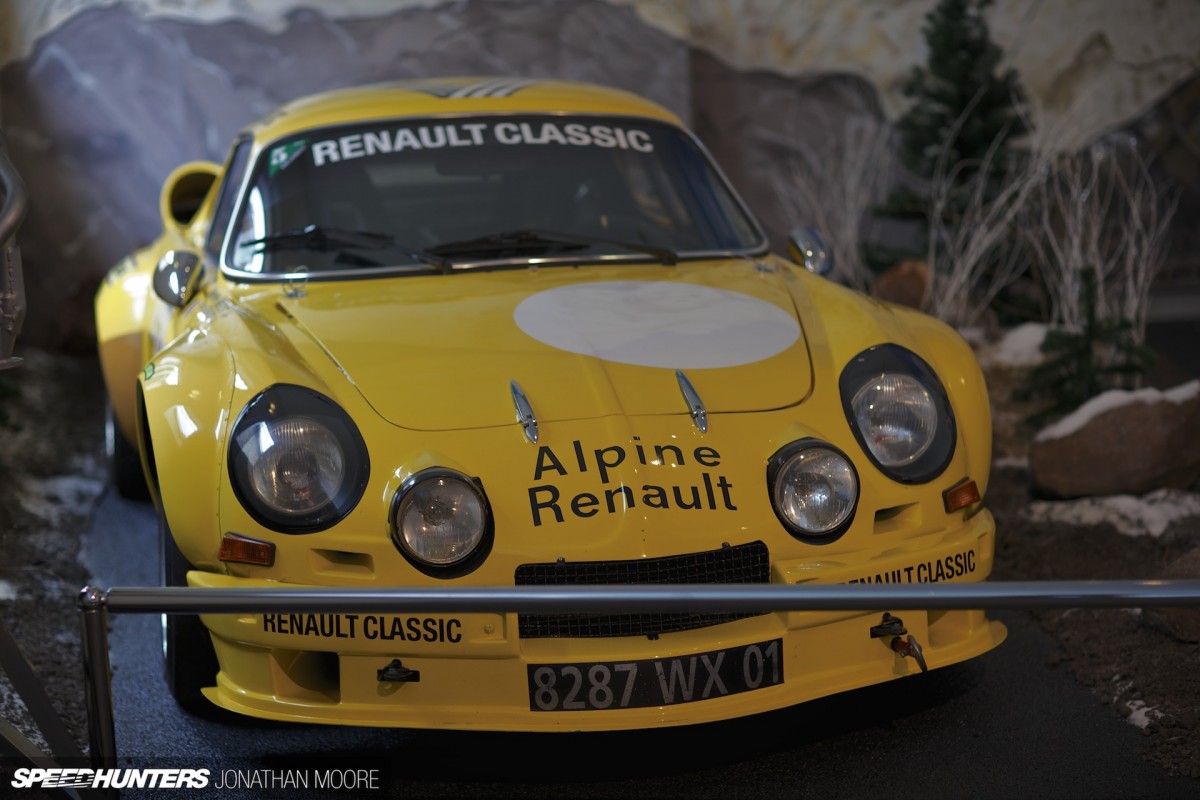
Turbos had been tried out in A110s as well, which must have been quite frightening, and the A110s in general continued to evolve as the world changed around them. This is the ultimate iteration of the breed, the A110 1800 16S from 1975 (okay, so Alpine didn’t do flowery names for their cars). It took technology from the radically different A310 which had been introduced in 1971, specifically the rear suspension. Wider, lower, meaner – and generally more Renault racing yellow.
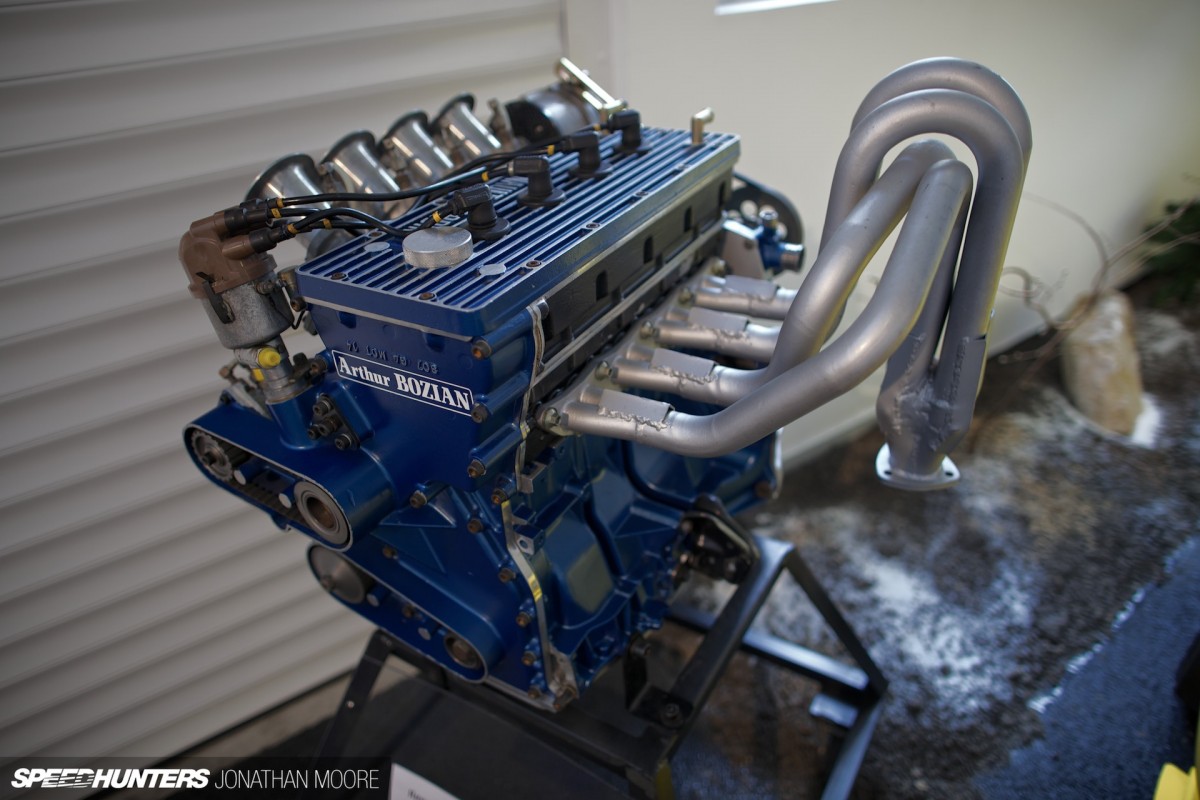
The Renault-Gordini inline-four might have still been small, but it was certainly potent by this stage: the exhausts on the 16-valve version were quite a work of art. It just shows that size doesn’t always matter.
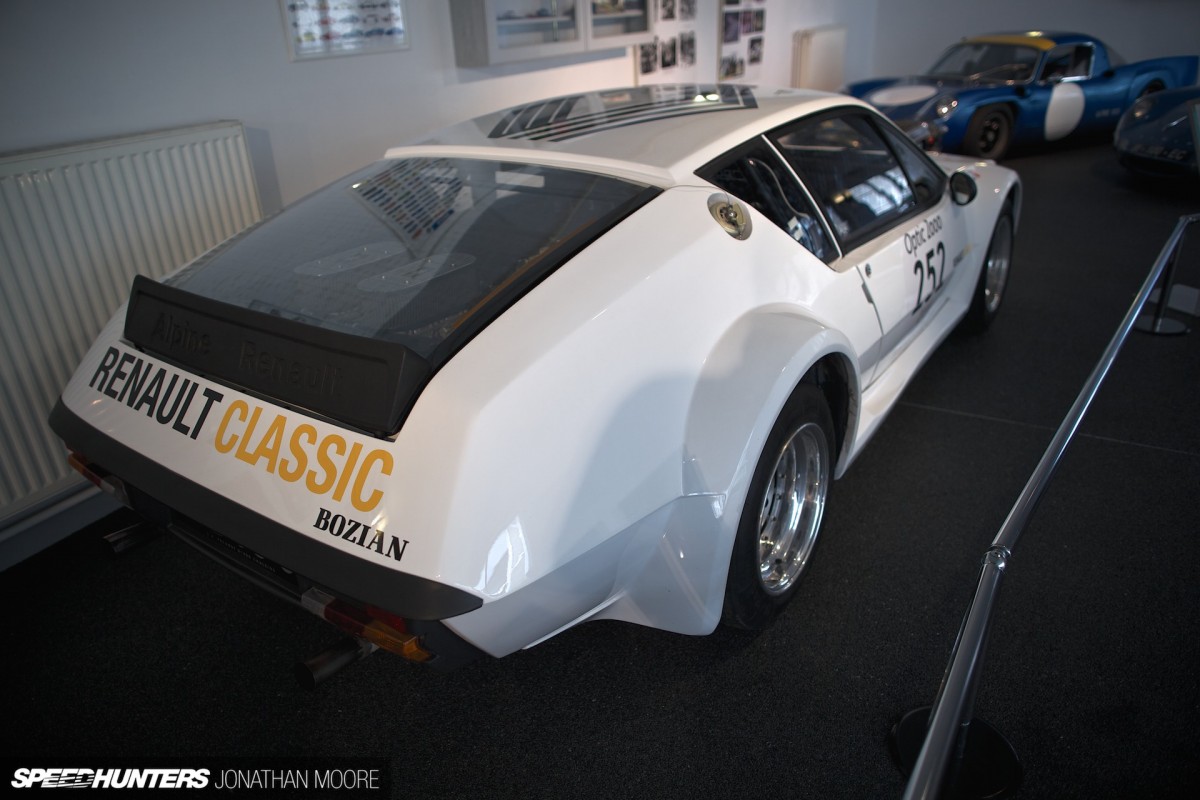
The A310 showed that Alpine might have been in the ’70s but they were looking to the future. It showed off the angular design that was the style du jour, but delivered it in a pretty timeless way. This is how I’d make my dream A310 project car look…
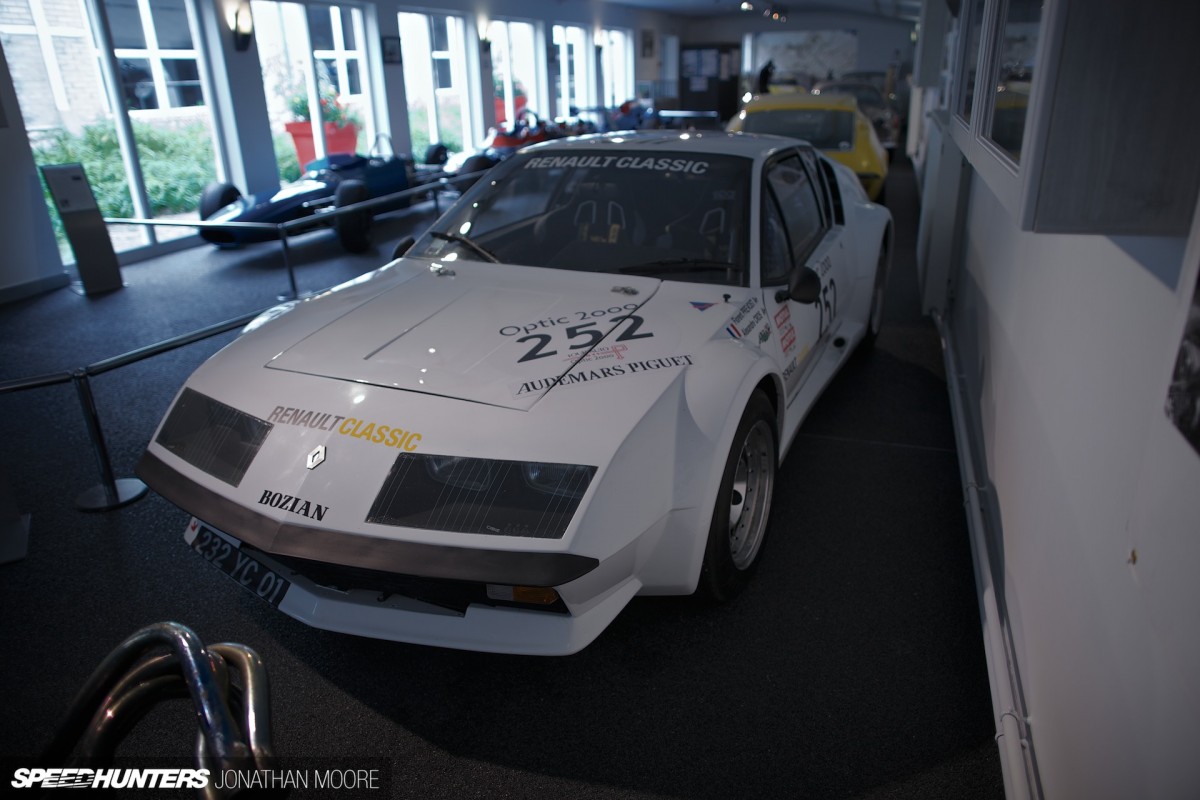
Only six examples were made of these wide-body Group 4 A310s, out of a planned run of 30: they were thoroughbred racers, but had a prohibitive price to match. But they look so good – those sharp lines, huge wheel arches and oversized light clusters…
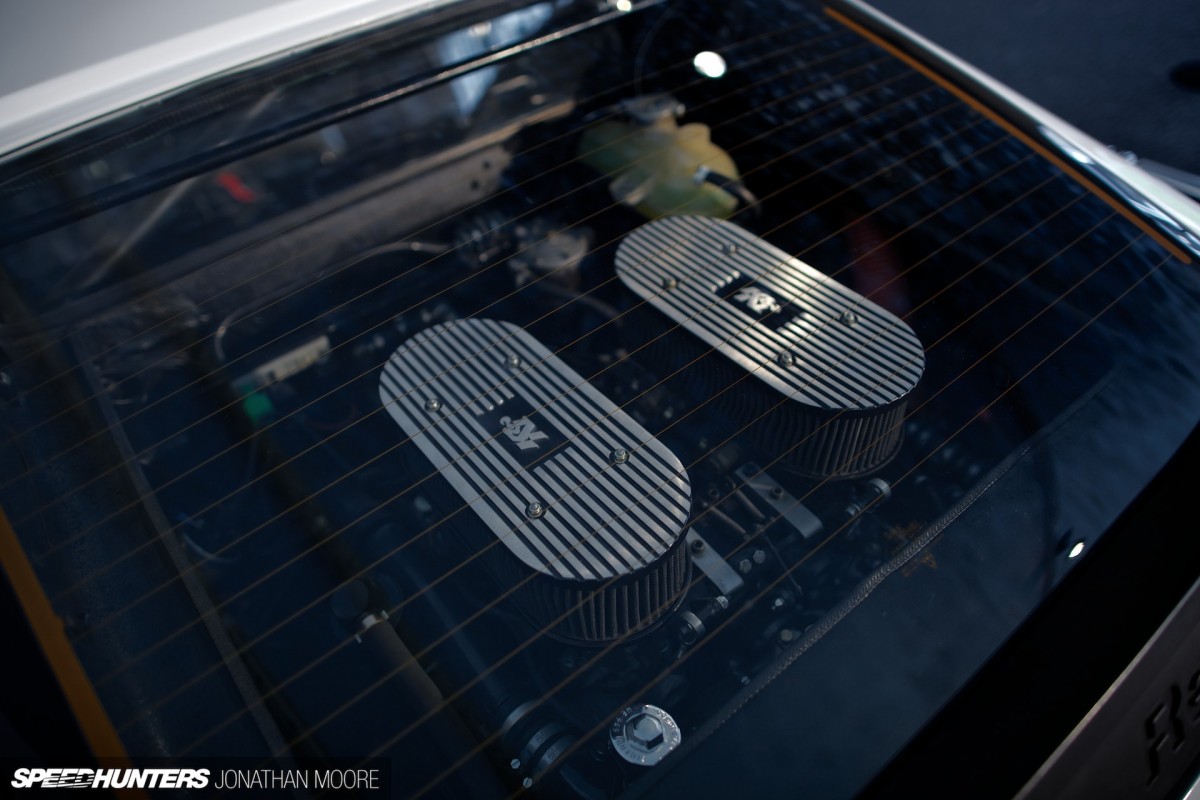
This car has had some more modern additions to its V6: power was admittedly always lacking in these cars, at least compared to their competition.
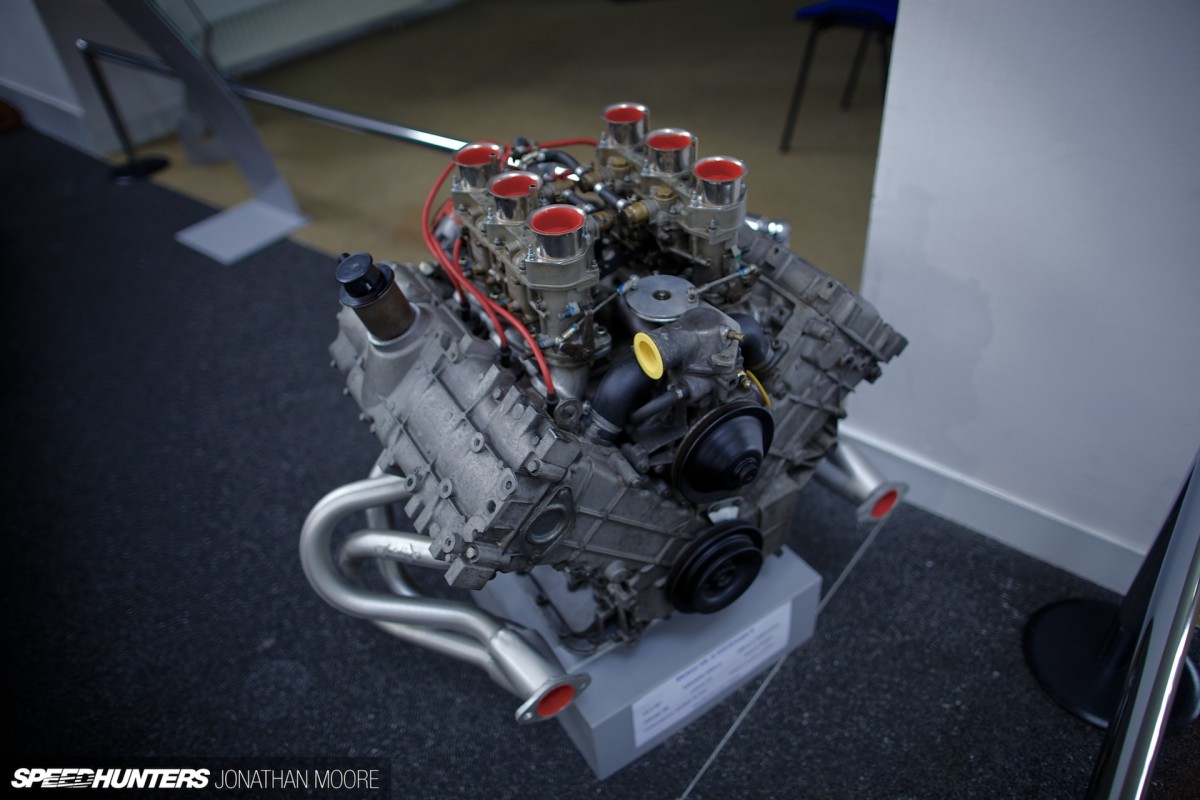
The base 2.6-litre made for a sensible, if not face-melting 240hp at 7,500rpm – the A310 did at least weigh in at 980kg.
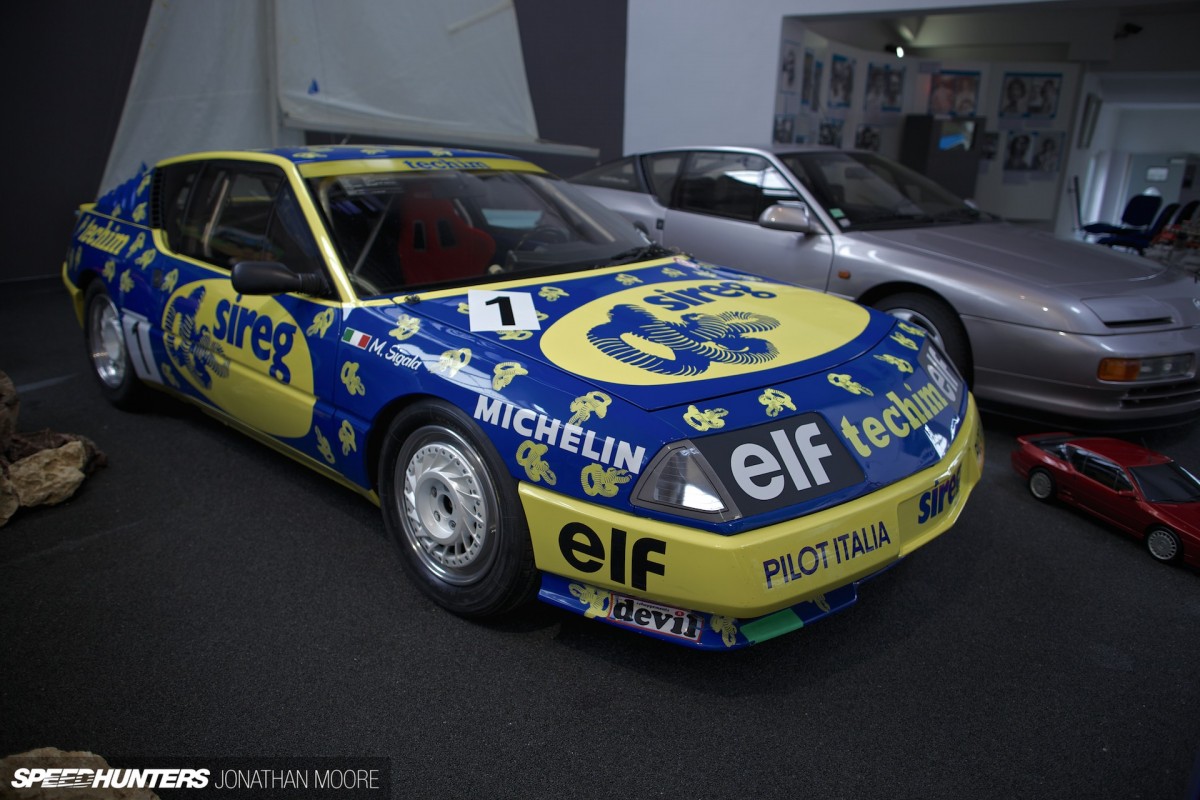
Alpine had one last hurrah before being replaced by the R5 Turbo as Renault’s premier competition brand: GTAs raced on the F1 undercard at many European Grand Prix between 1985 and ’88, and 69 were built. This V6 Turbo GTA has been recently restored: it won the Europe Cup three times.
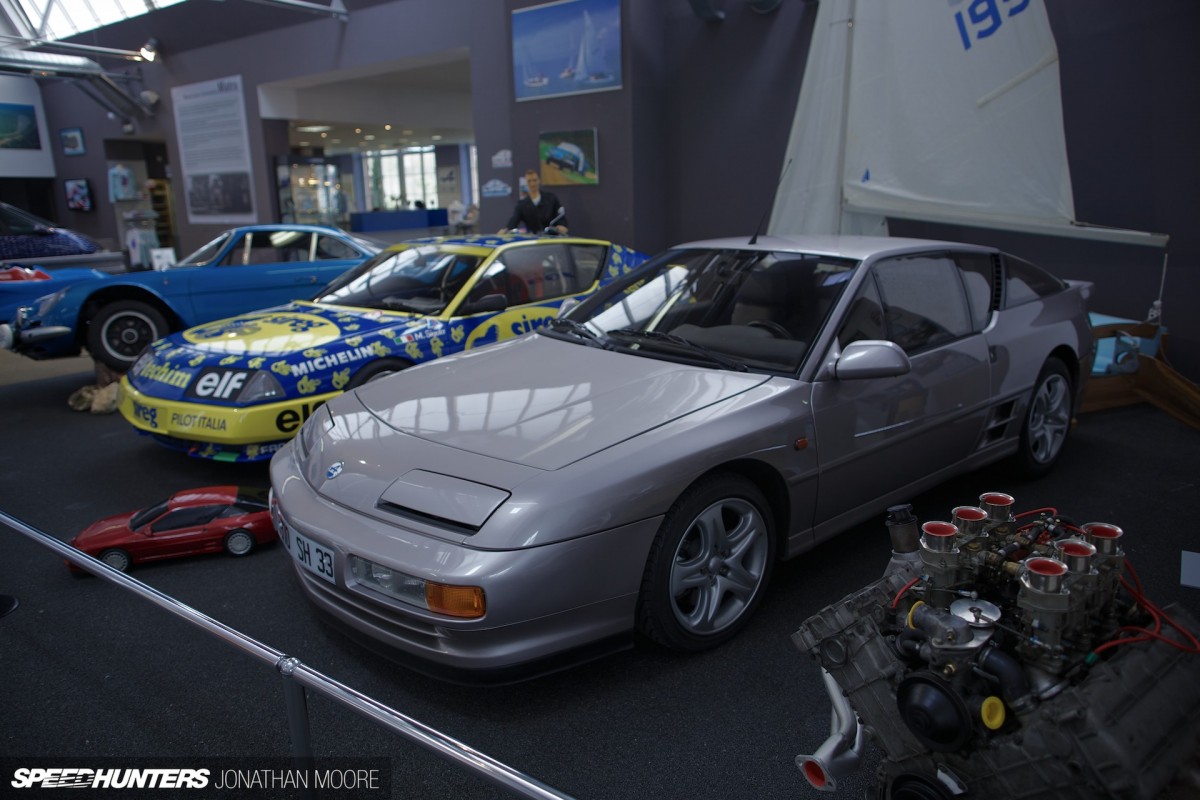
The final road car was the A610, which was based on the GTA. With a fully turbocharged line-up of V6 engine options, power hiked to 300hp and advanced aerodynamics, the reviews were good – but the sales weren’t. It was the end of Alpine’s road car adventure. In 1995, production at Dieppe swapped over to the Renault Spider, and the Alpine name went into virtual stasis. Until now, of course, with the return to Le Mans and the proposed Caterham road car tie-up. My visit to this collection of Alpines, combined with seeing the A110-50 concept at the Paris Motor Show and the Alpine-branded LMP2 at Le Mans means I can’t wait to see the return of an Alpine proper. I reckon there’s an Alpinista inside of all of us…






240hp at 7,500hp
wat
These historic posts are my favorite ones. This was equally as awesome as your Marta visit! Keep em coming!
There's also a car in the Gran Turismo "Vision Turismo" done by Alpine.
@Zondadude What can I say? It's got a wide range of horsepower available… Oops.
Jonathan Moore It's 'unconventional'.
I think that the yellow a110 may be the test car for the turbo engine (regarding to the large air scoop on the right rear pillar.
Not to forget: The first Renault F1 (yes before the yellow teapot)was a rebadged Alpine. Yes, Alpine made a F1 prototype
Oh Jonathan, if you're not bored with the plastic bumpers of the latest A310 your tream car could be a A310 Pack GT...
PS: great article (I'm born and raised in French Normandy)
Great article. Thoroughly enjoyed this look at the Alpine history.
I had a blue Alpine A110 die-cast model (one of many my dad bought me as a kid). Very cool car. It's crazy how small they are in actuality. You're essentially shoulder to shoulder with your passenger.
Jonathan Moore :
I know the owner of a Gr4 A310 . It's pink with green and is currently being driven like it's supposed to: On the track. The same owner has a Gr2 for sale in green, which was also raced at the track.First one is a picture of the Gr2 I took at circuit Zandvoort. The second one is de gr4 thats also shot at Zandvoort, but the car retired with engine failure (seizure) before the race began. They drive in cup all over Europe, with all kinds of period cars from the "60, 70" and 80". I have lot's more....
this article definitely made me look into the wonders of alpine. must say im impressed would never thought to have looked into to alpine cars. there quite amazing.
I do like Alpine, I really do. Except they obviously didn't realise that racing doesn't make you any money directly, and they should probably have put more effort into selling road cars to actually make some money - maybe then they wouldn't have gone bust by utterly relying on renault's profits.
Really good article on those faboulous cars. If you are interested in the Alpine A110, my Engineering School, ISAT, made a replica of it that they presented on the Paris Car Show last year :
http://www.google.fr/imgres?client=firefox-a&sa=X&rls=org.mozilla%3Afr%3Aofficial&biw=1440&bih=763&tbm=isch&tbnid=afozZTneiU7rDM%3A&imgrefurl=http%3A%2F%2Fwww.u-bourgogne.fr%2F-L-ISAT-au-mondial-de-l-automobile-.html&docid=t3DOi6h2GczJQM&imgurl=http%3A%2F%2Fwww.u-bourgogne.fr%2FIMG%2Fjpg%2FSPalette-MondialAuto.jpg&w=850&h=526&ei=O8rOUuKtIvDX7AaB9IGIAg&zoom=1&iact=rc&dur=750&page=1&start=0&ndsp=25&ved=0CFQQrQMwAA
Type in google "ISAT alpine" for more pics.
Really good article on those faboulous cars. If you are interested in the Alpine A110, my Engineering School, ISAT, made a replica of it that they presented on the Paris Car Show last year :
http://www.google.fr/imgres?client=firefox-a&sa=X&rls=org.mozilla%3Afr%3Aofficial&biw=1440&bih=763&tbm=isch&tbnid=afozZTneiU7rDM%3A&imgrefurl=http%3A%2F%2Fwww.u-bourgogne.fr%2F-L-ISAT-au-mondial-de-l-automobile-.html&docid=t3DOi6h2GczJQM&imgurl=http%3A%2F%2Fwww.u-bourgogne.fr%2FIMG%2Fjpg%2FSPalette-MondialAuto.jpg&w=850&h=526&ei=O8rOUuKtIvDX7AaB9IGIAg&zoom=1&iact=rc&dur=750&page=1&start=0&ndsp=25&ved=0CFQQrQMwAA
Type in google "ISAT alpine" for more pics.
Renault si not Fiat. After al, it's the story of a major brand buying a sport specialist. That is the end of the analogy with Ferrari.
Jean Rédélé, was a Renault dealer who sold track cars. Enzo was a sportcar designer who sold roadcars. Fiat injected money in Ferrari but Renault took control of Alpine and at the end Renault killed Alpine. They destroyed the first attempt of a F1 racecar (A350 in the sixties), then they merged Alpine (the research center) and Gordini into Renault sport. The black A500 prototype became the RS01 after being repainted in Yellow. Then they urged the release of the A310. A car designed to receive a V8 (the V6 Peugeot Renault Volva, was before the first petrol chock a V8 project) with a 4 cylinder engine. Imagine the opponents: SM, dino, 911... .
Then the Europa cup: first alpine GTAs then R5 Turbo...
After: the spyder: it could have been Alpine branded, but in the nineties, even in France it was better to brand it Renault Sport in order to have gains of the F1 success
Nowadays, the alpine plant build CLIO RS (for Renault Sport) and the Espace SUV...
The Future? The rebirth of Alpine was the project of Carlos Tavares, who was finally fired by Carlos Ghosn....
Renault si not Fiat. After al, it's the story of a major brand buying a sport specialist. That is the end of the analogy with Ferrari.
Jean Rédélé, was a Renault dealer who sold track cars. Enzo was a sportcar designer who sold roadcars. Fiat injected money in Ferrari but Renault took control of Alpine and at the end Renault killed Alpine. They destroyed the first attempt of a F1 racecar (A350 in the sixties), then they merged Alpine (the research center) and Gordini into Renault sport. The black A500 prototype became the RS01 after being repainted in Yellow. Then they urged the release of the A310. A car designed to receive a V8 (the V6 Peugeot Renault Volva, was before the first petrol chock a V8 project) with a 4 cylinder engine. Imagine the opponents: SM, dino, 911... .
Then the Europa cup: first alpine GTAs then R5 Turbo...
After: the spyder: it could have been Alpine branded, but in the nineties, even in France it was better to brand it Renault Sport in order to have gains of the F1 success
Nowadays, the alpine plant build CLIO RS (for Renault Sport) and the Espace SUV...
The Future? The rebirth of Alpine was the project of Carlos Tavares, who was finally fired by Carlos Ghosn....
Jonathan MooreGreat
write-up about these well engineered beauties! You're talking about
modifications and body kits. Well, that has been done extensively in the
80's and 90's. Some more, some less tasty. About 50 km from where I
live resides a man who builds nice Alpines and also races them in
hill-climb events: Axel Reß.
http://www.drivebysnapshots.com/alpine-findings-in-the-rhon-mountains/
Kind regards
Sebastian
@DriverSeb
Wow!
Always dug the A310 and A610, but that A108 Berlinette? Sweet baby jebus is that thing gorgeous! Heading to BaT and Ebay Motors...
bje4278 Isn't it just! That's the thing I like about collections like this, where you often see much more than just the well-known models. I was rather keen on the Marquis as well: I can't believe how old the design is!
DriverSeb Jonathan Moore Awesome find! I'll have to try and track that down next time I'm in France. Thanks Sebastian!
Fabrice Carpentier I did mention Abarth not Ferrari! But yes, Renault did suppress Alpine – but it was at a time when a lot of European manufacturers were doing likewise. Look at the massacre of British marques during the '80s and '90s. At least there still is an Alpine!
dovvv Well yes, but you've got to love someone who races for the love of racing. Having just been to the Autosport show, I loved that there were more low-volume manufacturers than ever. Vive la difference! But refusing factory money must be a tough thing to turn down, no matter the evidence of all the companies who have suffered as a result.
Joeyk Their prototype programme is covered in two excellent books, well worth checking out – and it shows how much they got up to in their relatively short sportscar history. There's also a book about how they helped develop Renault's F1 turbo programme: another great read!
Kevski Style Jonathan Moore Lovely! A310s do look great in racing form. I must get to another French historic event this year!
RFMartin Yep: that traditional approach to European sportscars... I'm trying to avoid buying die-cast models of A110s now I'm (supposed to be) grown up!
FrankCastiglione Thanks Frank! As ever, there's so much more – but then there are always more stories for the future!
Fabrice Carpentier Nice idea! I'm trying to decide on a European car to take on as a project track car... It's a tough choice!
Fabrice Carpentier I've double-checked the information panel for that car, and it doesn't mention it – which you would it if had been such an important A110. But that doesn't mean it wasn't! I'll have to try and find out!
Jonathan Moore Kevski Style : These photo's weren't shot at a French historic event, although a couple of french people drive in this championship. The others are cars from the 60's 70's 80's and early 90's. Examples: BMW DTM , JZ80 Supra, Renault Alpine R5, Alpine A310 Gr.2, Rover SD1, Jide, Alfa Romeo GTA, Trabant S601, just to name a few. Starting grid contains between 30 to 40 cars each event!
Really nice piece Jonathan, too bad you couldn't have shot the cars out and about in the world. I'd kill a baby, in front of its own mother, for a 110.
Jonathan MooreDriverSeb That's actually in Germany, Jonathan. >> http://www.ress-motorsport.de
Jonathan Moore RFMartin Ah, just go for it. If you buy the one's with decent build quality, they'll look great spaced between books on your office shelves. You just have to be selective with your purchases, and fight the urge to knock those books off of your shelves to fit more cars. lol
I actually found my A110 model. I have to fix the lower valence and front bumper.
(What can I say? I liked driving cars before I even got behind the wheel of a real car.)
The A110 is such a lovely car. Seeing one in the flesh make realize how tiny this car is ! It is extremely low and it has a lot of negative camber on the back !
Fabrice Carpentier

The Alpine plant, based at Dieppe, don't build Espace, Espace is built at Sandouville
They build Clio RS for road, and all of Renault Sport tracks cars.
Fantastic!
sean klingelhoefer I think I would do the same thing too.
you can see a few renault alpines cruising around Nashville / Murfreesboro Tennessee if your lucky. They belong to the lane motor museum. honestly would be a pretty cool place for a feature, home to Nissan's historic division too
Jonathan MooreFabrice Carpentier Yes, you're right. I compared Alpine and Ferrari because they were sportcars makers bought by major brands.
ArnaudAFabrice Carpentier http://fr.wikipedia.org/wiki/Renault_Espace regarding this article espace 2 used to be built there... ( I remember that the espace made at Sandouville is the 4th gen one)
Fabrice Carpentier ArnaudA

You speak about Espace 2, and when i read the article, Espace 2 was build at Romorantin, plant of Matra, not Alpine or Renault !
I don't understand what you want to say ?
PS: I suppose you are french ?
Can anyone please tell me what car is this?
http://i44.tinypic.com/2v2wi9u.png
@doubleoh9 I've asked Mike about visiting our museum, but it hasn't happened yet. Hopefully one of these days.